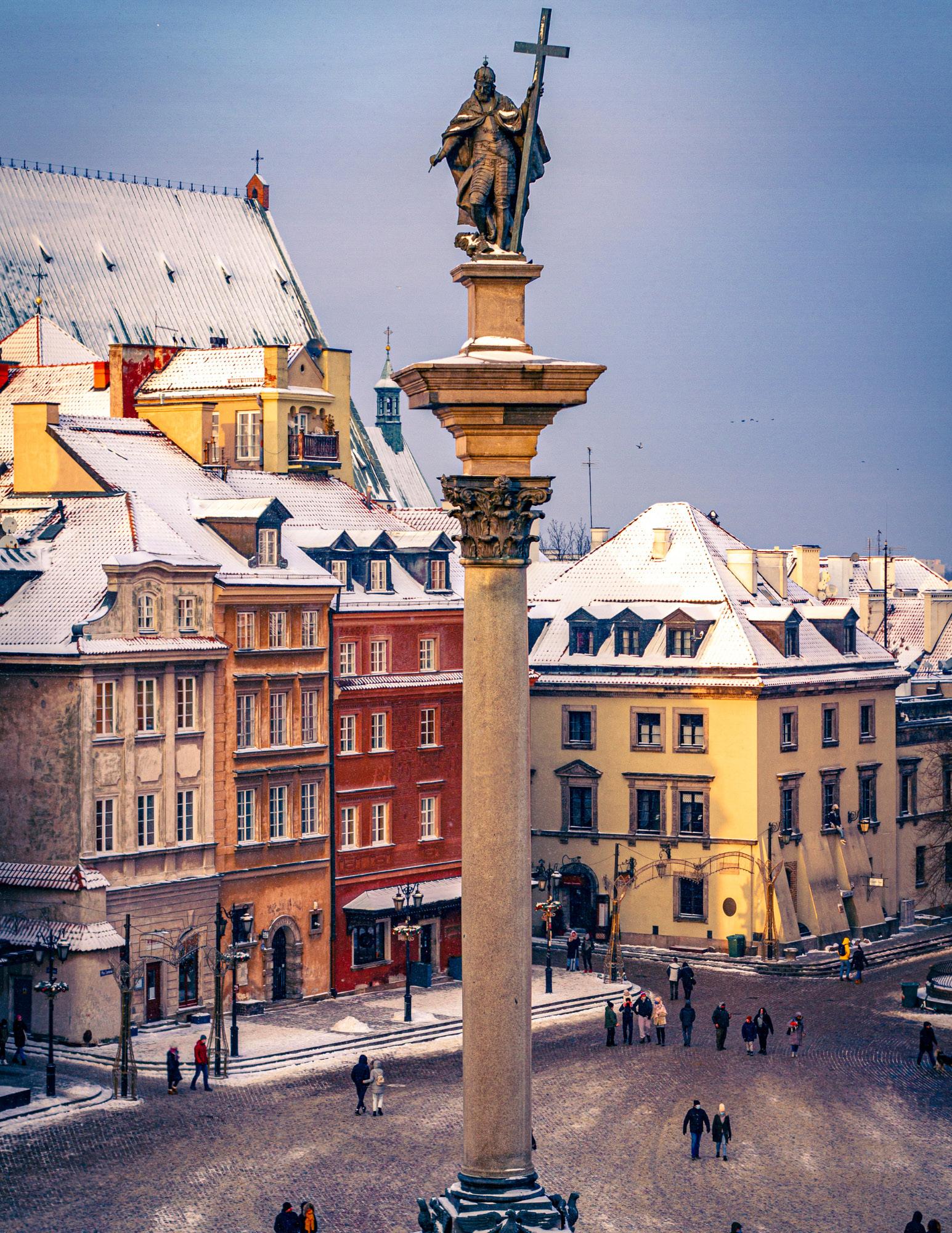

Poland & the Czech Republic
Top Sites & Destinations



Introduction
Taking a trip to Poland offers a rich blend of history, culture, and natural beauty that makes it a fascinating destination. As a country with a turbulent past, Poland has seen invasions, partitions, and world wars, yet it has emerged as a symbol of resilience and cultural pride. Visitors to Poland are greeted by cities and landscapes that reflect both its medieval roots and modern revitalization. Warsaw, the capital, exemplifies this resilience. Completely rebuilt after its near-total destruction in World War II, the city is a blend of modern skyscrapers and meticulously reconstructed historic districts like the UNESCO-listed Old Town. Its Royal Castle and the Warsaw Uprising Museum offer insight into Poland’s complex history. Kraków, another must-see destination, provides a glimpse into the medieval heart of the country. Its well-preserved Old Town,



the Wawel Castle, and the ancient Jagiellonian University are surrounded by a lively cultural scene. Nearby, the poignant Auschwitz-Birkenau Memorial reminds visitors of the atrocities of the Holocaust, encouraging reflection and remembrance. Poland is also a place of deep cultural traditions. Festivals such as Easter and Christmas are celebrated with rich customs and colorful folk art. Poland’s cuisine, including dishes like pierogi, bigos, and żurek, is hearty and rooted in centuries of agricultural life. Outside the cities, travelers can explore Poland’s diverse landscapes, from the Tatra Mountains to the Baltic Sea. A trip to Poland is not only a journey through time but also an opportunity to experience a country that treasures its heritage while embracing modernity.

Wawel Castle
Wawel Castle, perched atop Wawel Hill in Kraków, Poland, is a historic and architectural gem that dates back to the 11th century. It served as the residence of Polish kings for centuries and is a symbol of national pride. The castle’s construction combines Romanesque, Gothic, Renaissance, and Baroque styles, reflecting Poland’s dynamic history and cultural influences. As a royal residence, Wawel Castle was the political and cultural heart of Poland. It hosted important events such as coronations, royal weddings, and diplomatic meetings. One of its most famous kings, Sigismund I the Old, oversaw major renovations in the 16th century, introducing Renaissance


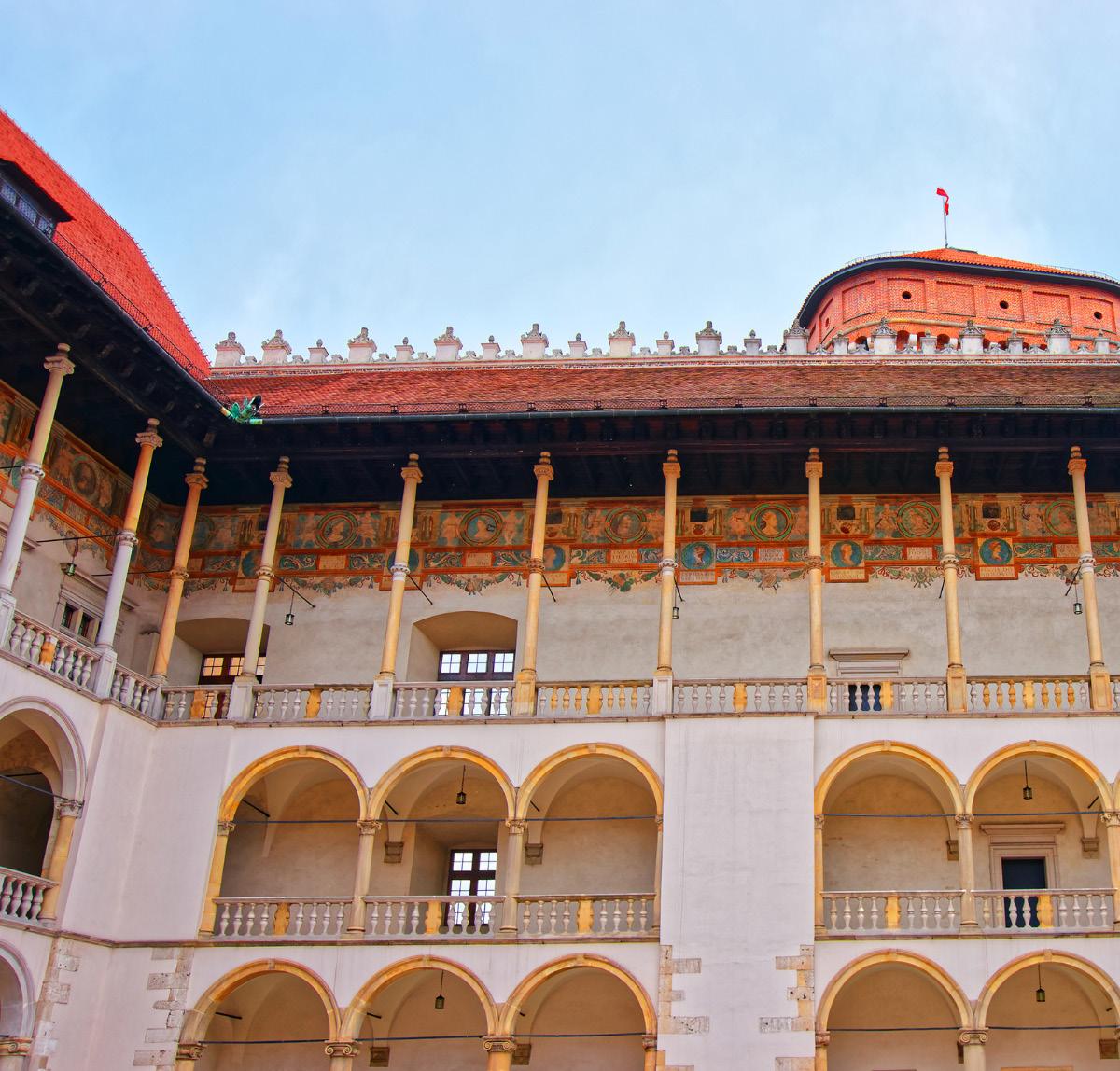
elements that gave the castle much of its current grandeur. Today, Wawel Castle is a UNESCO World Heritage site and a major tourist attraction. Visitors can explore the State Rooms, which house an extensive collection of art and historical artifacts, as well as the Royal Apartments, Treasury, and Armory. The Wawel Cathedral, located on the castle grounds, is the final resting place of many Polish monarchs. Wawel Castle remains a powerful symbol of Polish heritage, drawing visitors who want to experience its rich history, stunning architecture, and significance in the nation’s cultural identity.
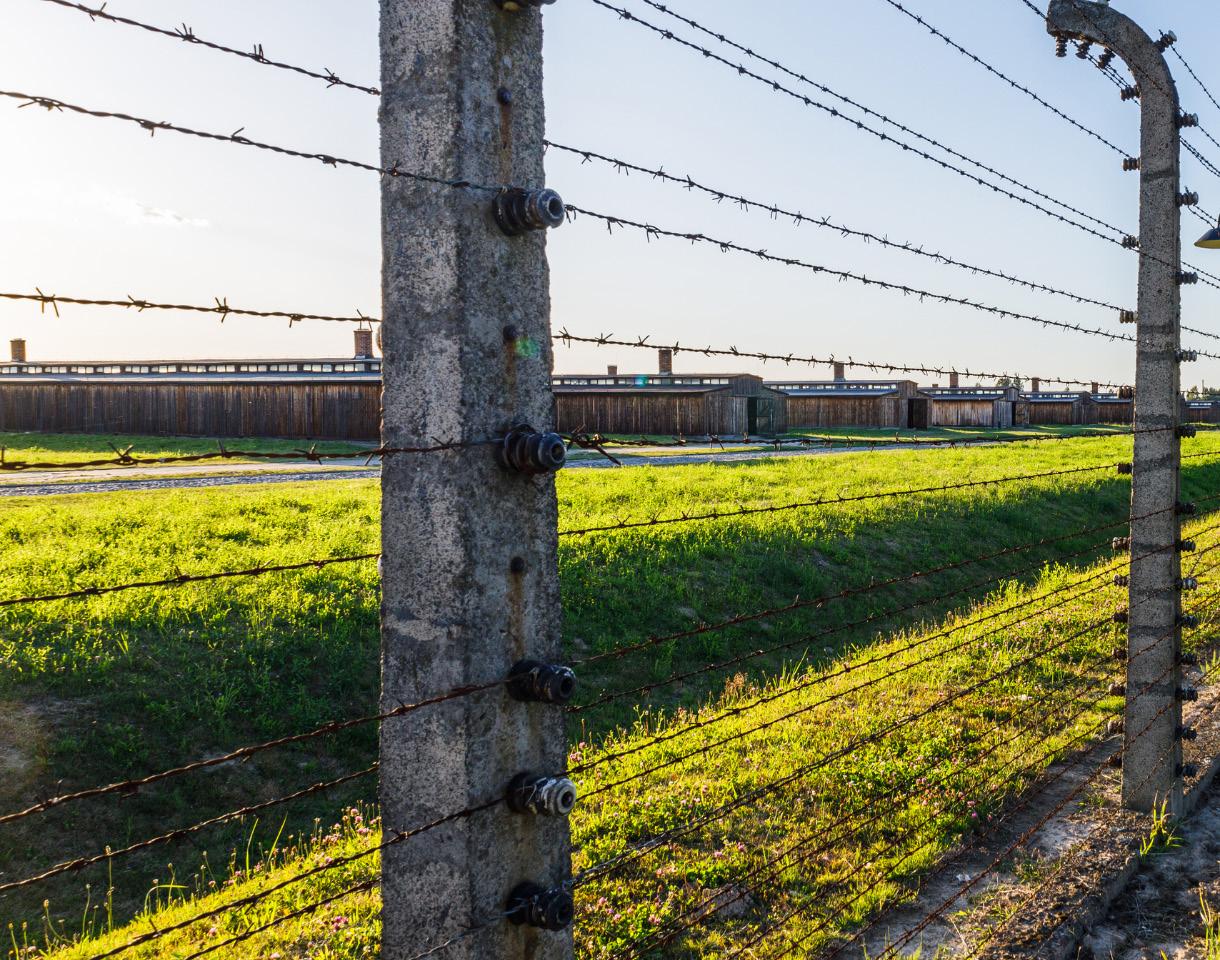
Auschwitz-Birkenau
Auschwitz-Birkenau, located in Oświęcim, Poland, was the largest of the Nazi concentration and extermination camps during World War II. It became a central symbol of the Holocaust, where over 1.1 million people, mostly Jews, were murdered between 1940 and 1945. The camp complex included Auschwitz I, a concentration camp, and Auschwitz II-Birkenau, which became the primary site of mass executions using gas chambers. Auschwitz-Birkenau was not only a place of extermination but also of forced labor, where prisoners suffered inhumane conditions, starvation, and brutal treatment. It housed people from various persecuted groups, including


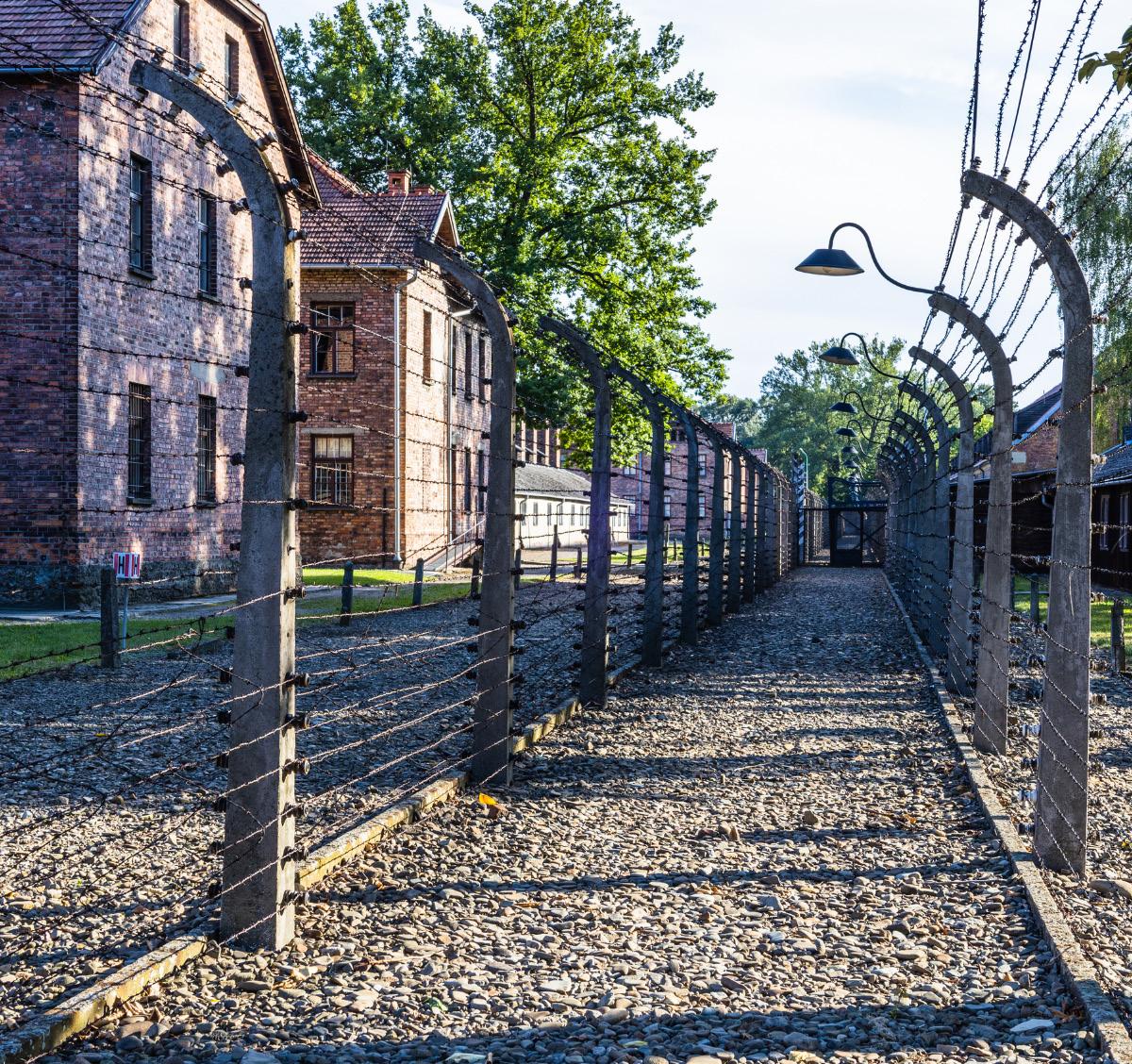
Jews, Romani, Soviet prisoners of war, and Polish political prisoners. The systematic killings at Birkenau were carried out with chilling efficiency, using Zyklon B gas in the gas chambers. The camp became synonymous with the industrialized mass murder that characterized the Nazi regime’s “Final Solution.” Liberated by Soviet forces in January 1945, Auschwitz-Birkenau now stands as a memorial and museum, preserving the memory of the atrocities committed there. It serves as a stark reminder of the horrors of genocide and the importance of remembering history to prevent future atrocities. Visitors come from around the world to pay their respects and learn from this dark chapter in human history.

Old Town, Warsaw
Old Town in Warsaw, Poland, is a historic district that stands as a symbol of resilience and reconstruction. Originally established in the 13th century, it was the heart of Warsaw, filled with Gothic, Renaissance, and Baroque architecture, bustling market squares, and important civic buildings. During World War II, the Old Town was almost completely destroyed by Nazi forces during the Warsaw Uprising in 1944, leaving it in ruins. After the war, the people of Warsaw undertook an extraordinary reconstruction project, meticulously rebuilding the Old Town to its former glory. Using paintings, photographs, and historical documents, the city’s iconic buildings,



such as the Royal Castle, St. John’s Cathedral, and the colorful townhouses lining the Market Square, were faithfully restored. This effort was recognized internationally, and in 1980, Warsaw’s Old Town was declared a UNESCO World Heritage site for its successful and historically accurate restoration. Today, Old Town is a vibrant area, attracting both locals and tourists with its charming streets, cafés, and historical sites. The Market Square, with its mermaid statue, is a central gathering point, surrounded by art galleries, restaurants, and museums. Old Town represents not only Warsaw’s rich history but also its resilience and determination to rise from devastation.
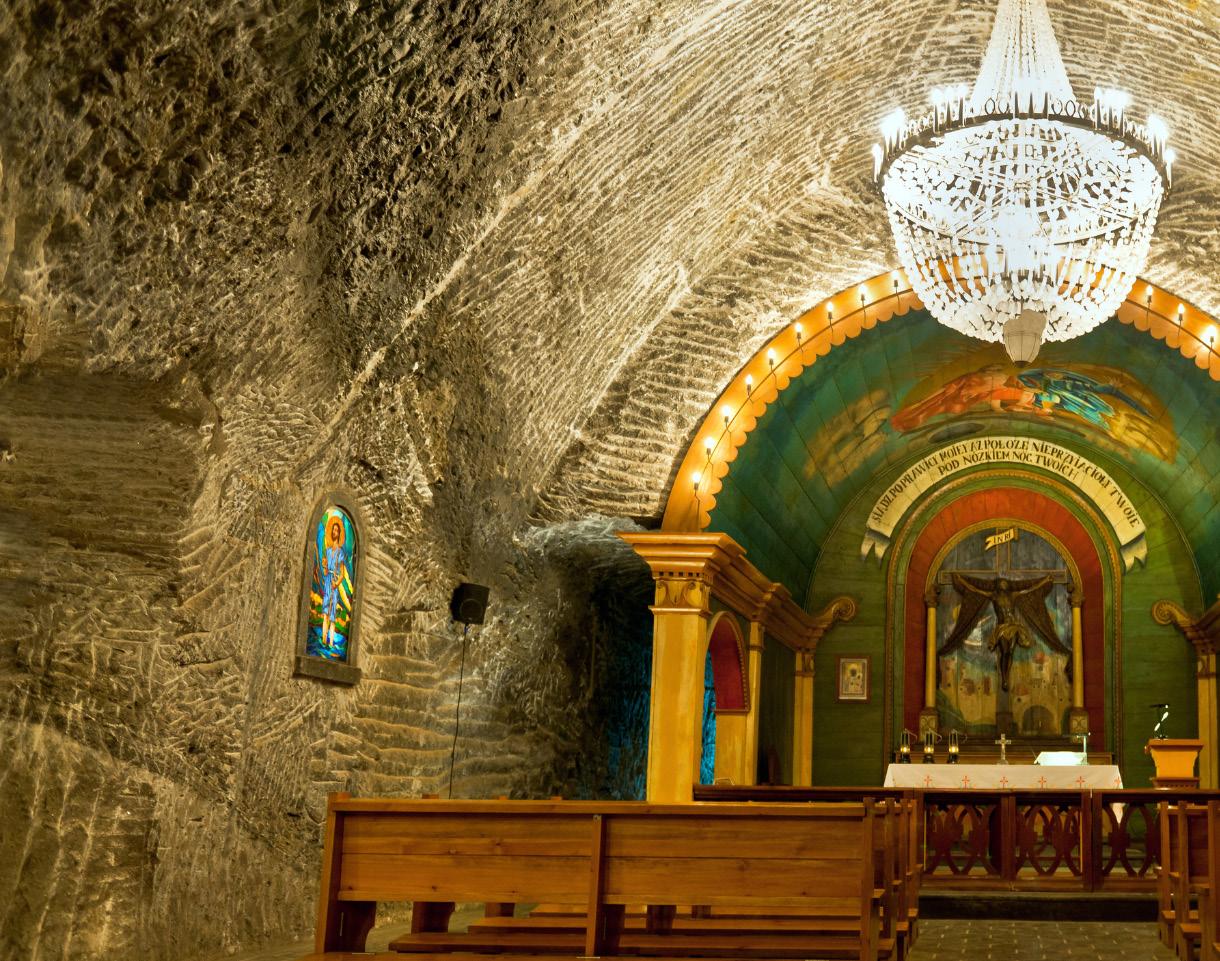
Wieliczka Salt Mine
The Wieliczka Salt Mine, located near Kraków, Poland, is one of the world’s oldest salt mines, with a history dating back to the 13th century. For centuries, it was a vital source of salt, a precious commodity at the time, and contributed significantly to Poland’s economy. The mine stretches for over 300 kilometers (186 miles) of tunnels and chambers spread across nine levels, reaching depths of over 327 meters (1,073 feet). What makes the Wieliczka Salt Mine truly extraordinary is its underground world of art and history. Miners, over the centuries, carved intricate statues, chapels, and even entire cathedrals out of rock salt. The Chapel of St. Kinga, one of the mine’s

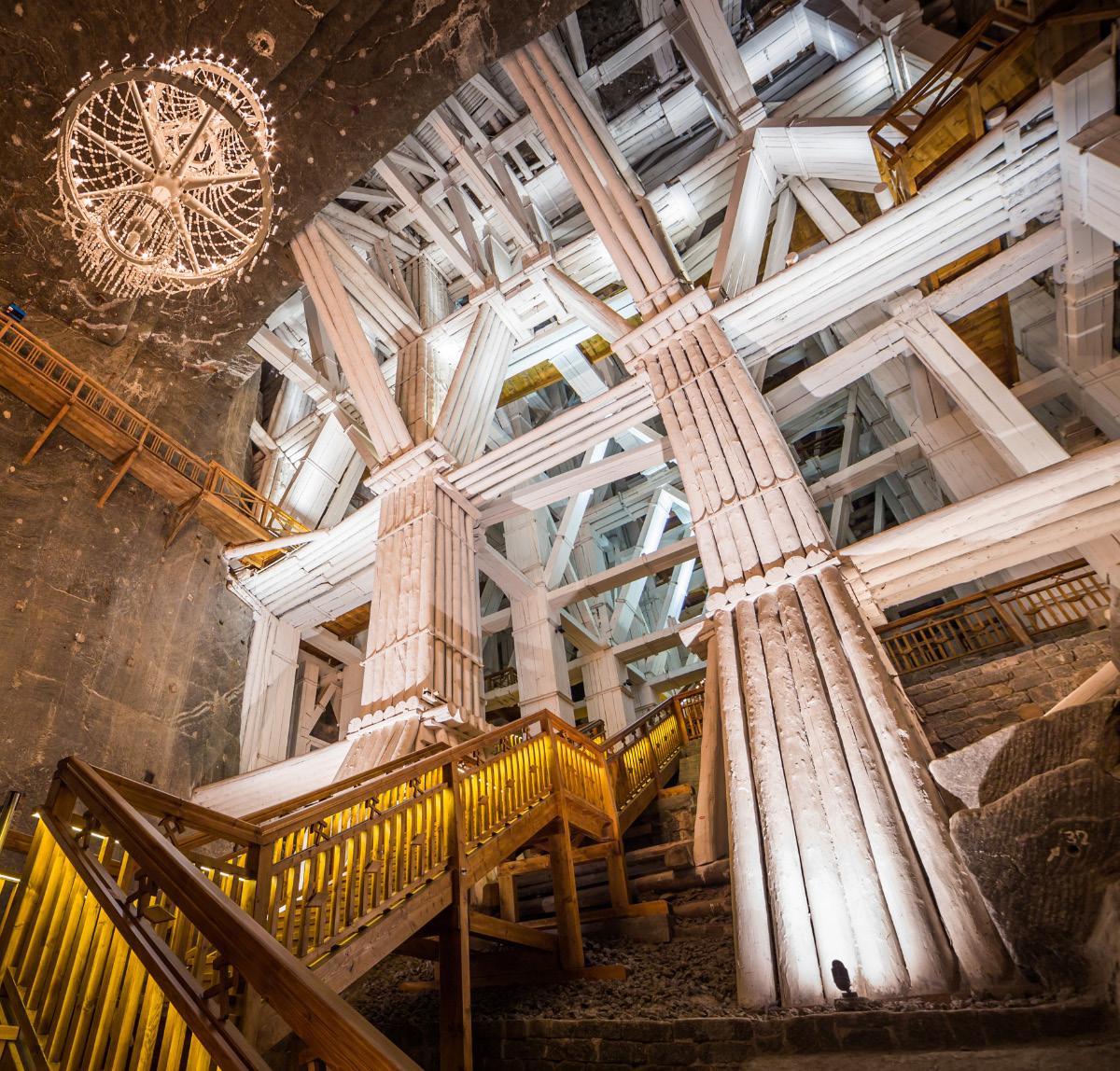

most famous attractions, is an awe-inspiring underground church adorned with salt chandeliers, sculptures, and reliefs depicting biblical scenes. In 1978, the Wieliczka Salt Mine was designated a UNESCO World Heritage site, recognized for its unique combination of natural beauty and human craftsmanship. Today, it draws over a million visitors annually, who can explore its labyrinthine passages, underground lakes, and remarkable salt-carved monuments. The mine also has a history of being a place of healing due to the microclimate in its lower levels, believed to benefit respiratory health.
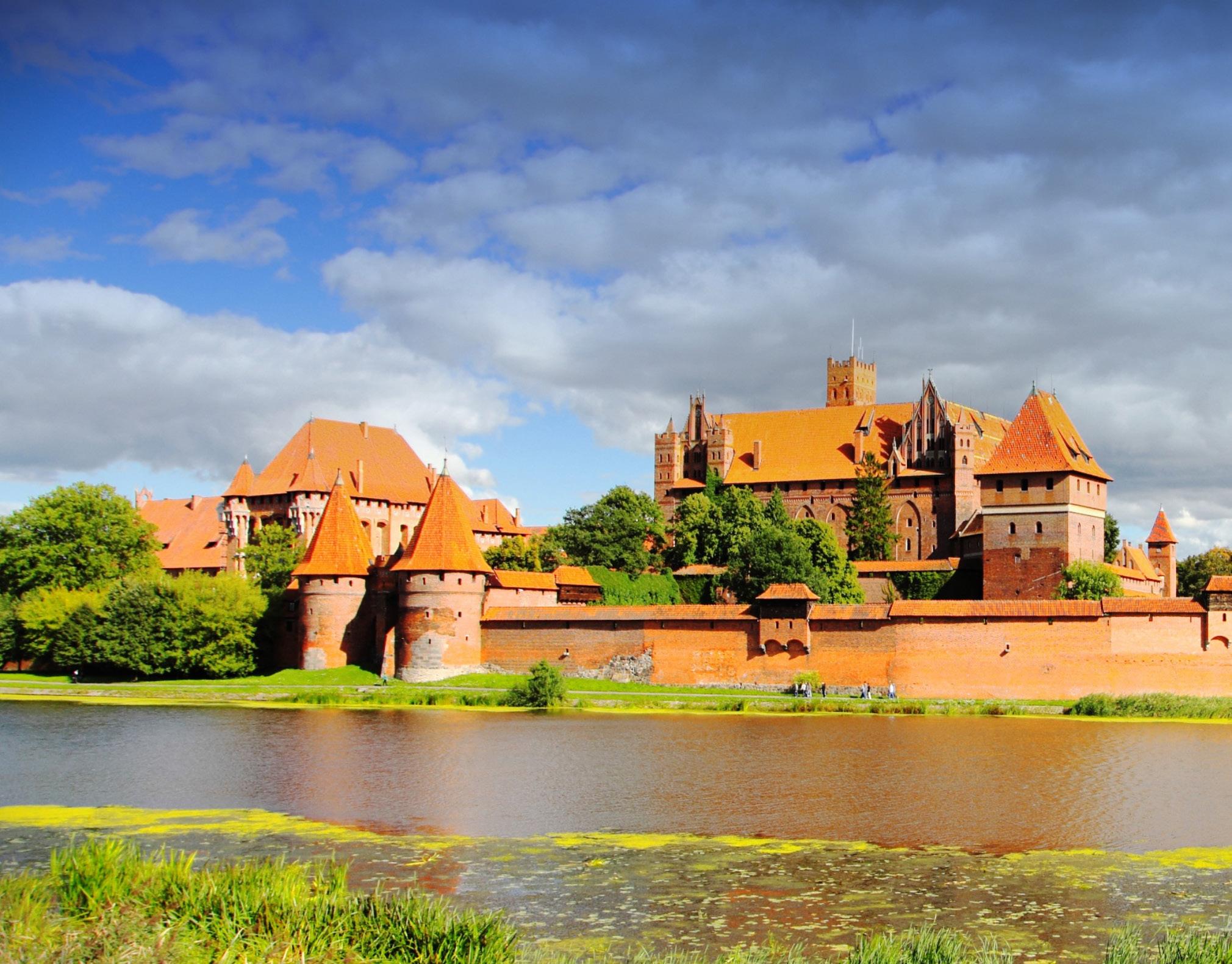
Malbork Castle
Malbork Castle, located in northern Poland, is the largest castle in the world by land area and one of the most impressive examples of medieval fortifications in Europe. Built in the 13th century by the Teutonic Knights, a German Roman Catholic military order, the castle served as their headquarters and a symbol of their power during the height of their reign over the Baltic region. Originally called Marienburg (Castle of Mary), the castle is a masterpiece of Gothic architecture, constructed entirely of brick. It is a complex of three separate castles: the High Castle, the Middle Castle, and the Lower Castle, each serving different purposes. The imposing walls, towers, and defensive structures are a testament to its military importance during the Middle Ages. Malbork


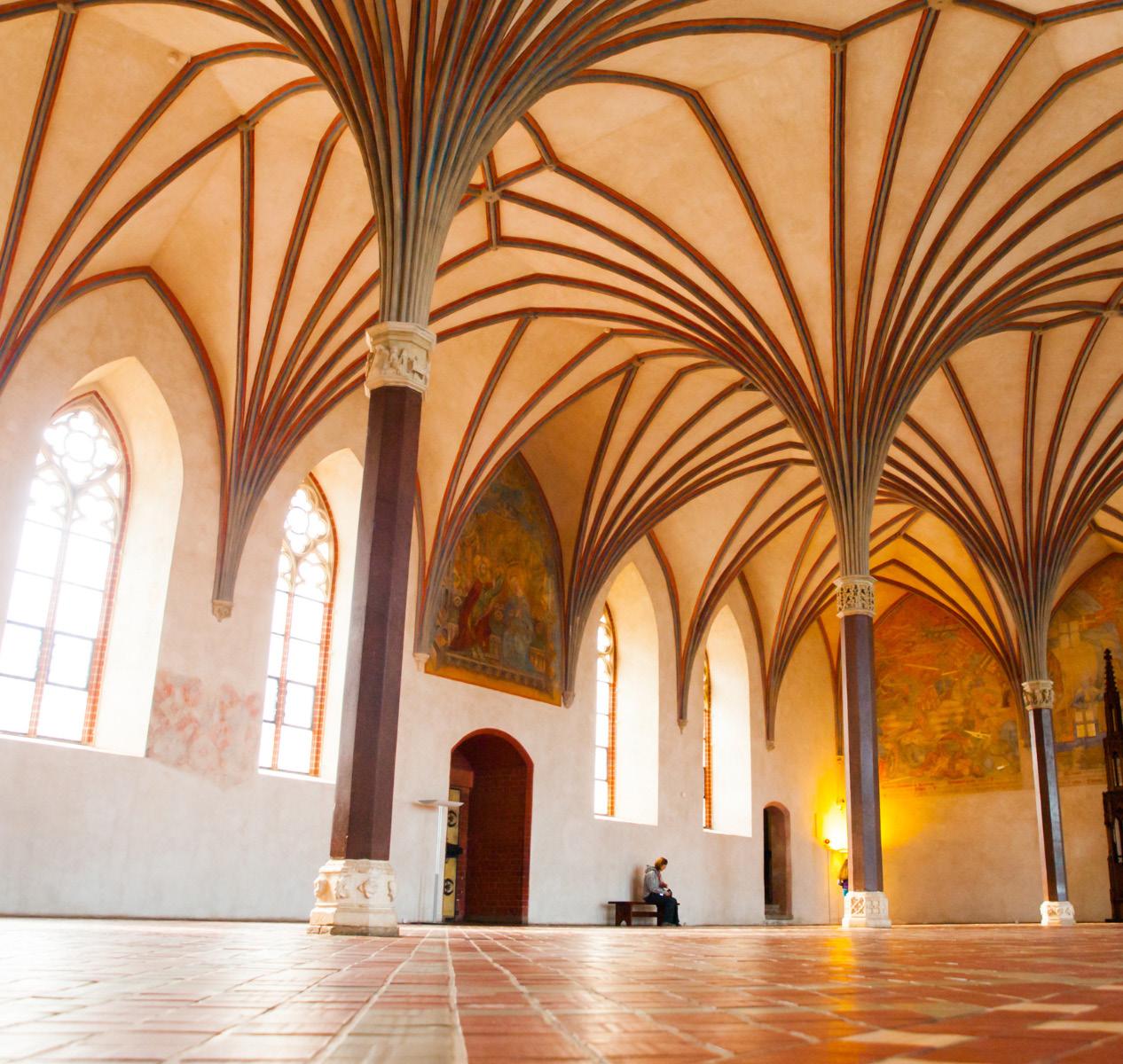
Castle played a crucial role in the Teutonic Order’s efforts to Christianize and control the region, and it later became the residence of Polish royalty after the Order’s defeat in the Battle of Grunwald in 1410. The castle was expanded and modified over the centuries, becoming a symbol of Polish and European history. Today, Malbork Castle is a UNESCO World Heritage site and a major tourist attraction. Visitors can explore its vast courtyards, grand halls, and medieval chapels, learning about the fascinating history of the Teutonic Order and the region. Its stunning architecture and historical significance make Malbork Castle one of Poland’s most remarkable landmarks.

Białowieża Forest
Białowieża Forest, located on the border between Poland and Belarus, is one of Europe’s last and largest remaining primeval forests. This ancient woodland has been relatively undisturbed for over 10,000 years, making it a rare natural treasure. Spanning over 3,000 square kilometers, Białowieża Forest is home to an incredibly rich biodiversity, with hundreds of species of plants, animals, fungi, and birds, many of which are rare or endangered. The forest is perhaps most famous for being the habitat of the European bison, or wisent, the continent’s largest land mammal. Once nearly extinct, the bison has been successfully reintroduced to the forest, and Białowieża now hosts one of the largest herds in the wild. Visitors to the forest have the opportunity to observe these
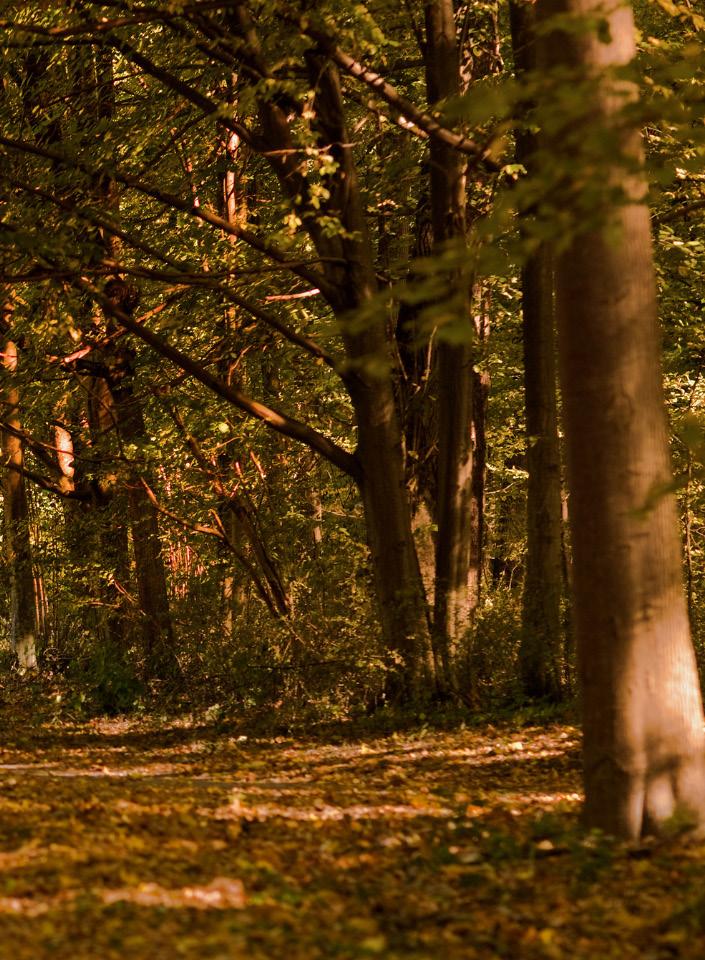


majestic animals in their natural environment, alongside wolves, lynx, deer, and a variety of bird species. In addition to its wildlife, Białowieża Forest boasts towering ancient trees, including oaks, ash, and lime trees, some of which are hundreds of years old. The forest offers a unique experience for nature lovers, with miles of hiking and cycling trails that weave through untouched ecosystems. Recognized as a UNESCO World Heritage site, Białowieża is also a symbol of conservation efforts. It remains a vital part of Poland’s natural heritage and is a must-see destination for those seeking to experience the beauty and tranquility of a truly primeval forest. The forest also offers insights into the importance of preserving Europe’s natural landscapes for future generations.
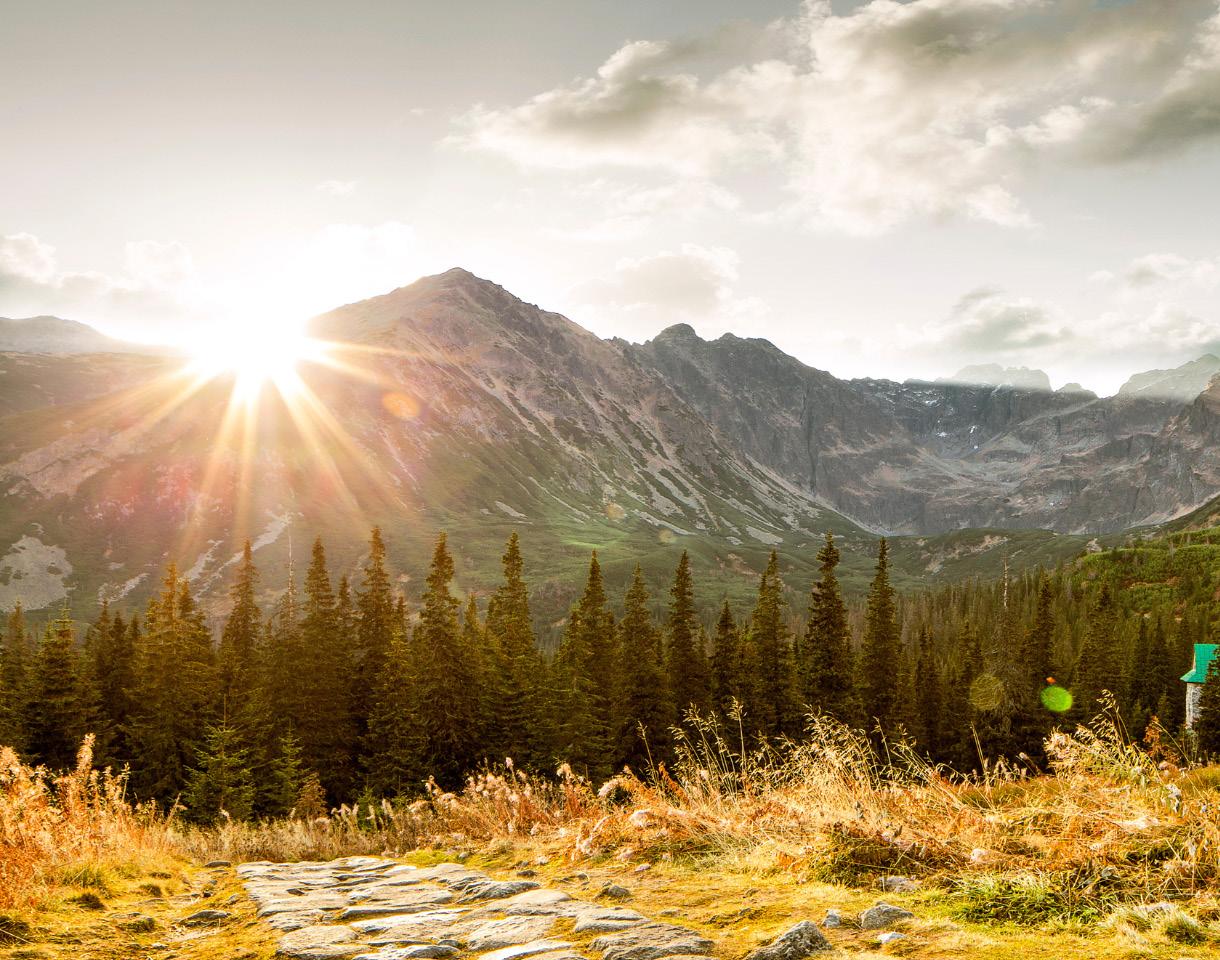
Zakopane
Tatra Mountains
Zakopane, often referred to as the “Winter Capital of Poland,” is a picturesque town located at the foot of the Tatra Mountains, the highest range in the Carpathians. Known for its breathtaking alpine scenery and rich cultural heritage, Zakopane is a year-round destination offering outdoor adventures and a glimpse into traditional highland life. During the winter months, Zakopane transforms into a hub for skiing, snowboarding, and snowshoeing, attracting tourists from across Europe. Its slopes cater to both beginners and experienced skiers, while the town itself offers cozy wooden cottages, or chalets, built in the distinctive Zakopane architectural style. The town’s lively main street, Krupówki, is lined with shops, restaurants, and markets selling traditional

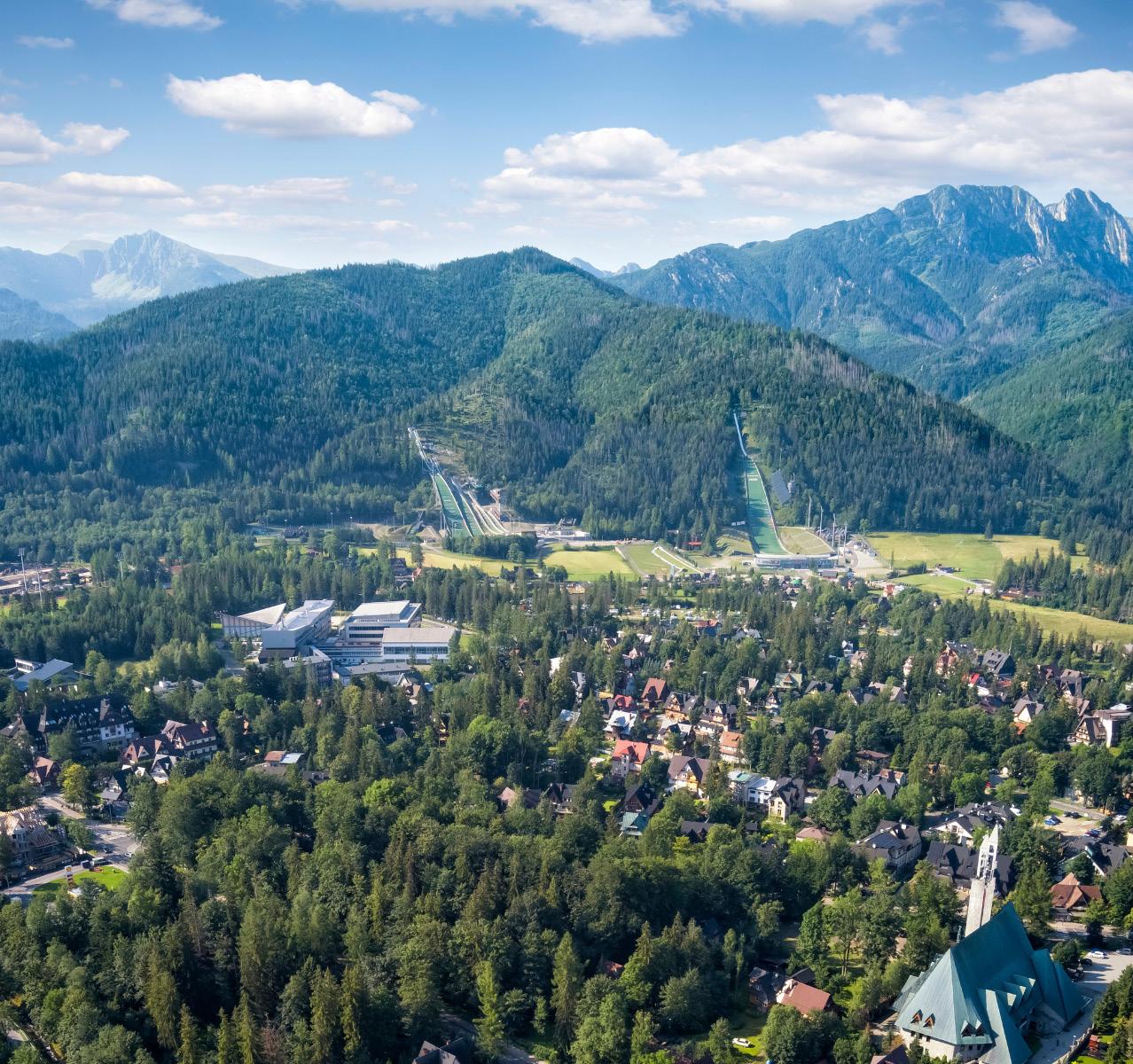

mountain crafts, woolen goods, and local delicacies. In the summer, Zakopane is a gateway to hiking, climbing, and exploring the stunning Tatra National Park. Trails lead to crystal-clear mountain lakes like Morskie Oko, and the challenging peaks of Rysy and Giewont offer stunning panoramic views. Zakopane is also a cultural center for Poland’s Górale (highlanders), known for their folk music, distinctive clothing, and hearty cuisine. Visitors can experience highlander traditions through local festivals, music performances, and the famous oscypek cheese. Whether for winter sports or summer hiking, Zakopane and the Tatra Mountains are a captivating destination for nature lovers and culture enthusiasts alike.
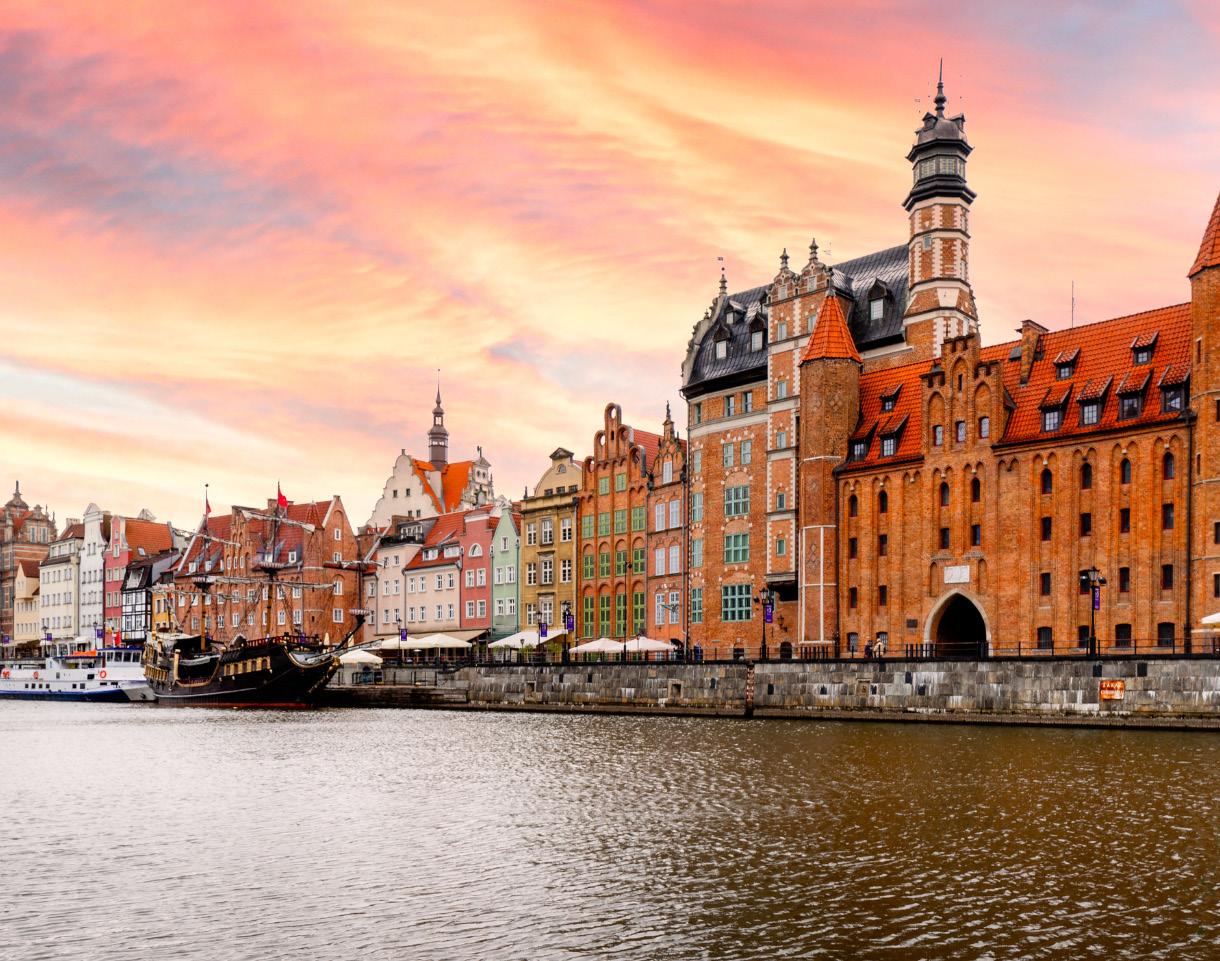
Gdańsk
Gdańsk Old Town, situated on Poland’s northern coast along the Baltic Sea, is a beautifully restored historic district that reflects the city’s rich maritime heritage and complex history. As one of Poland’s most important port cities, Gdańsk has been a center of trade, culture, and politics for centuries. Its Old Town showcases a unique blend of architectural styles, including Gothic, Renaissance, and Baroque, making it one of the most picturesque areas in the country. Among the most iconic landmarks in Gdańsk Old Town is Long Market (Długi Targ), a vibrant square lined with colorful merchant houses and historic buildings. The Neptune Fountain, symbolizing the city’s connection to the sea, stands prominently here, along with the grand Artus Court,
Old Town

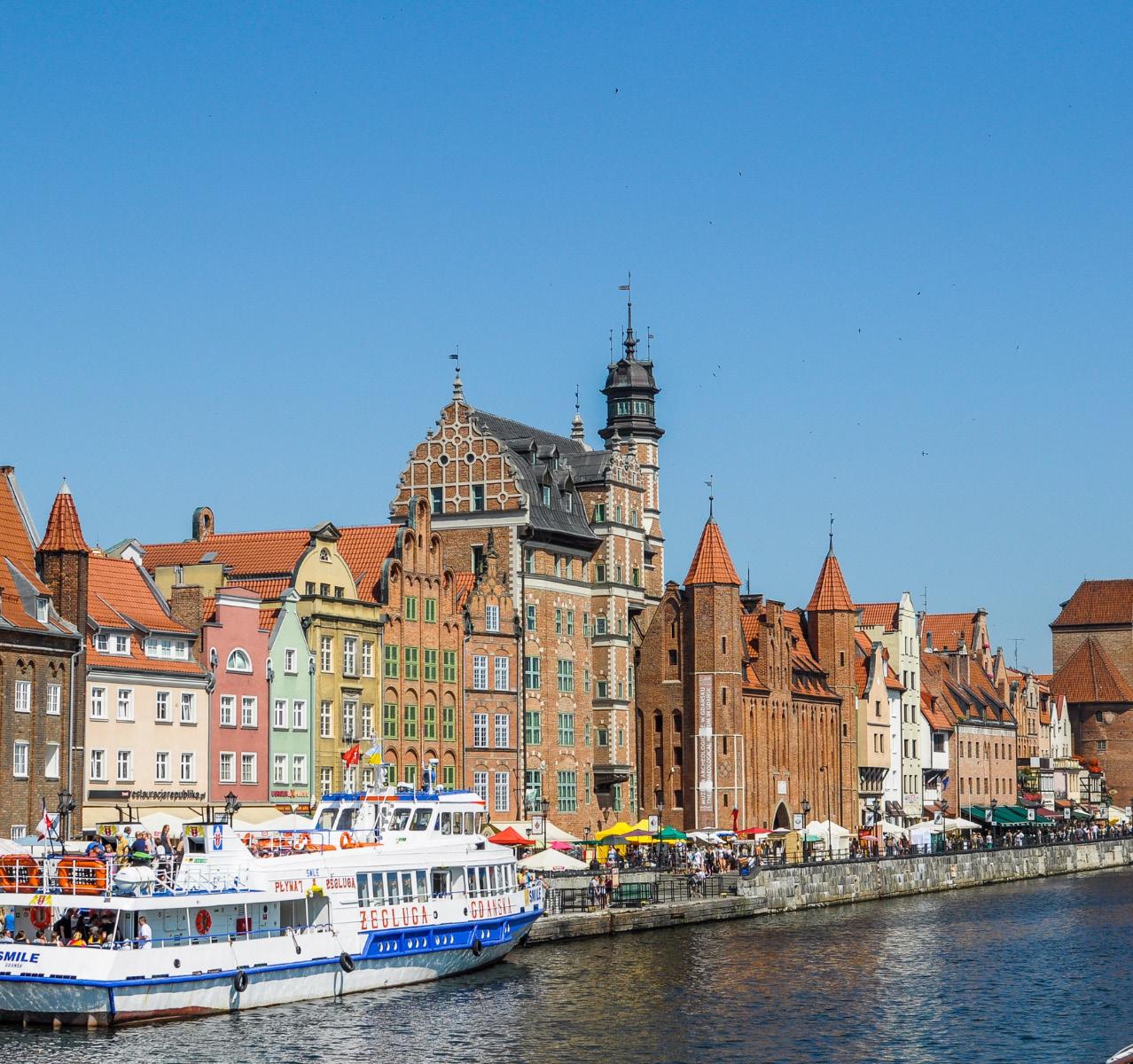

which once served as a meeting place for merchants and dignitaries. The towering St. Mary’s Church, one of the largest brick churches in the world, offers stunning views of the city from its observation deck. Gdańsk has a unique place in modern history as the birthplace of the Solidarity movement, which played a significant role in the fall of communism in Eastern Europe. Visitors can explore this legacy at the European Solidarity Centre, a museum dedicated to the history of the movement and its impact on global politics. Beyond its history, Gdańsk Old Town is known for its lively cultural scene, with numerous festivals, restaurants, and shops offering local amber jewelry and crafts. The combination of maritime history, architectural beauty, and modern culture makes Gdańsk Old Town an unforgettable destination for travelers.

Tatra National Park
Tatra National Park, located in southern Poland, is a stunning natural sanctuary that encompasses the Polish side of the Tatra Mountains, the highest range in the Carpathians. Established in 1954, the park covers approximately 211 square kilometers and is known for its dramatic alpine landscapes, diverse ecosystems, and rich biodiversity. It is one of Poland’s most popular destinations for nature lovers and outdoor enthusiasts. The park is home to some of the most breathtaking scenery in Poland, including towering peaks like Rysy, the highest point in Poland, glacial lakes such as Morskie Oko, and deep valleys. The diverse landscape ranges from alpine meadows to dense forests, with fast-flowing streams and waterfalls adding to



the park’s beauty. Tatra National Park is also part of a UNESCO Biosphere Reserve, reflecting its global environmental significance. The park is a haven for wildlife, including species such as the Tatra chamois, brown bears, wolves, lynx, and a variety of birds. The preservation of these species is a key focus of the park’s conservation efforts. Hiking is one of the main attractions in Tatra National Park, with over 270 kilometers of marked trails that offer something for all levels of experience. Whether it’s a leisurely walk around Morskie Oko or a challenging ascent of Rysy, the park provides stunning vistas at every turn. In addition to hiking, the park is a favorite for climbers, skiers, and mountaineers. Tatra National Park is not only a natural treasure but also a vital part of Poland’s cultural heritage, attracting visitors seeking adventure and tranquility amidst its pristine landscapes.
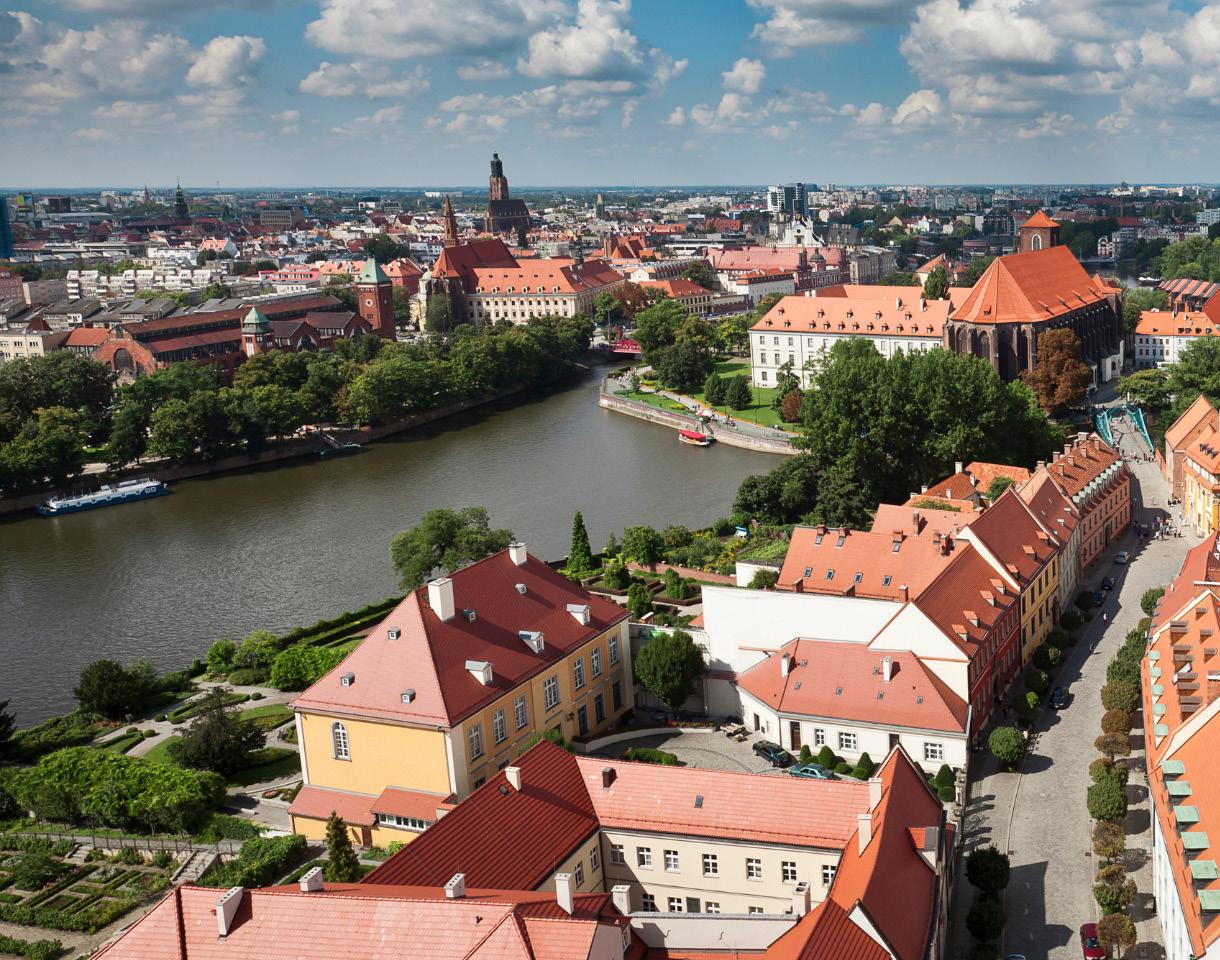
Wrocław Old Town, located in southwestern Poland, is a vibrant and historic area that showcases the city’s rich cultural heritage and architectural beauty. Known for its picturesque squares, stunning Gothic and Baroque buildings, and dynamic atmosphere, Wrocław Old Town is one of the most charming and historically significant areas in Poland. At the heart of the Old Town is Rynek, one of the largest market squares in Europe, lined with colorful townhouses and historic landmarks. The centerpiece of the square is the Wrocław Town Hall, a masterpiece of Gothic architecture, featuring an ornate facade and a richly decorated astronomical clock. Surrounding Rynek are lively cafés, restaurants, and shops, making it a popular gathering spot for both locals
Wrocław
Old Town



and tourists. Another key attraction in Wrocław Old Town is the Cathedral Island (Ostrów Tumski), the oldest part of the city, where visitors can explore the stunning Wrocław Cathedral and other medieval churches. The island is a peaceful retreat, with cobbled streets and lantern-lit pathways creating a romantic atmosphere, especially in the evening. Wrocław’s Old Town is also known for its unique collection of bronze dwarfs, scattered throughout the city as symbols of the Orange Alternative, an anticommunist movement. These whimsical statues add a playful and modern touch to the city’s historic streets. With its blend of history, culture, and vibrant energy, Wrocław Old Town offers a delightful experience for visitors. Its mix of Gothic, Renaissance, and Baroque architecture, along with its lively cultural scene, makes it a must-see destination in Poland.

Bieszczady Mountains
The Bieszczady Mountains, located in the southeastern corner of Poland, form part of the Carpathian range and are one of the most scenic and tranquil natural areas in the country. This remote, unspoiled region offers a unique escape for those seeking solitude, wildlife, and breathtaking landscapes. Unlike the more developed Tatra Mountains, Bieszczady is known for its rolling hills, vast meadows, and dense forests, making it a favorite destination for hikers, nature lovers, and those looking for peace and quiet. The mountains are part of the Bieszczady National Park, the third-largest national park in Poland, and a UNESCO Biosphere Reserve. The park is home to diverse wildlife, including brown bears, wolves, lynx, and one of the

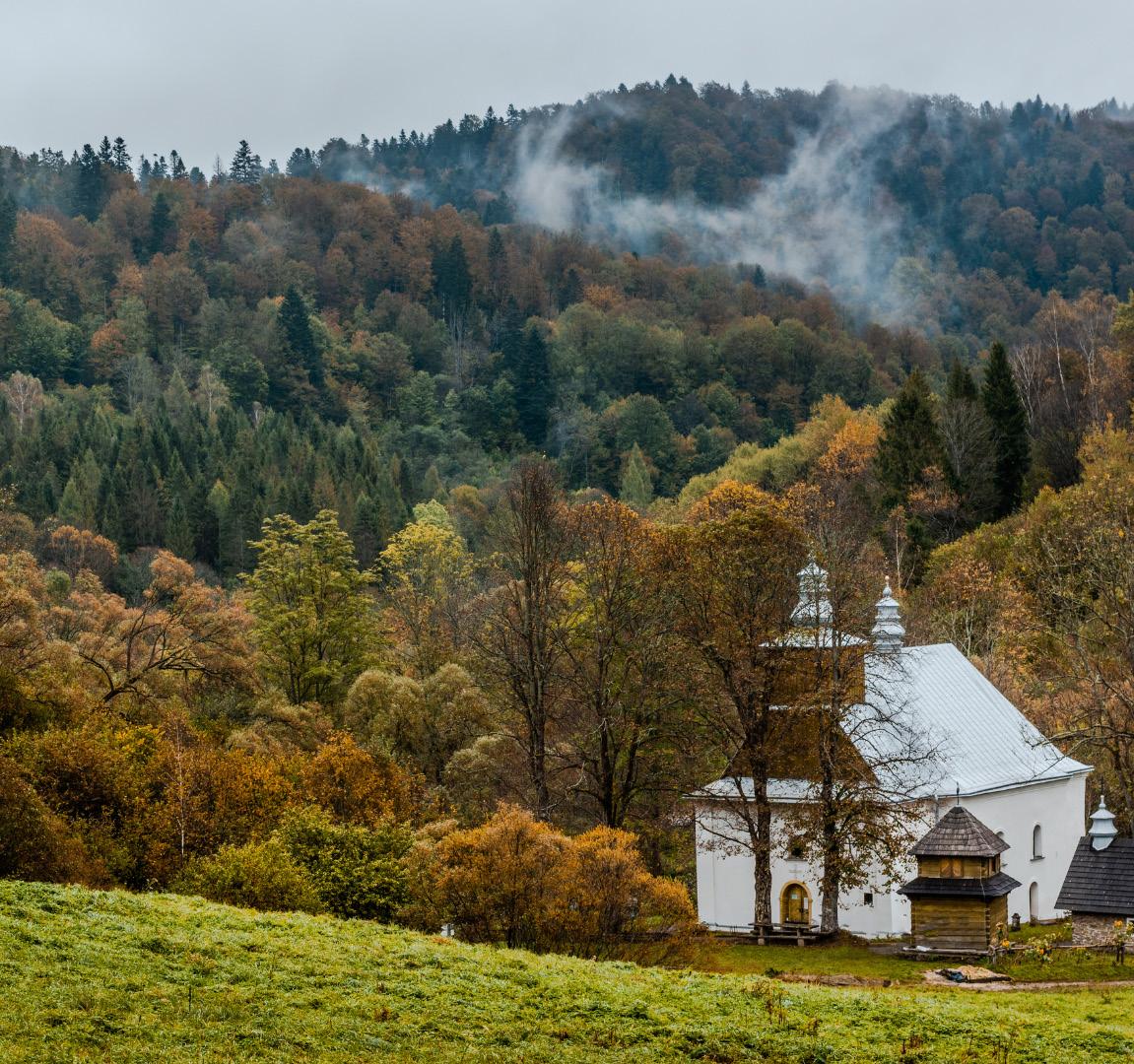

largest populations of European bison in Poland. Birdwatchers can also spot golden eagles, owls, and other rare species that thrive in this protected environment. Hiking in Bieszczady is one of the main attractions, with well-marked trails that lead through pristine landscapes, offering panoramic views of the surrounding mountains and valleys. One of the most popular trails is the Połonina Wetlińska, which takes hikers through beautiful meadows and open ridges, providing some of the best views in the region. The Bieszczady Mountains are also steeped in history and culture. The region was once home to diverse ethnic groups, including Lemkos and Boykos, whose wooden Orthodox churches can still be found scattered across the landscape. For travelers seeking a connection to nature and a taste of Poland’s wilderness, the Bieszczady Mountains are a perfect destination.

Łazienki Park
Łazienki Park, located in the heart of Warsaw, is one of Poland’s most beautiful and expansive urban parks, covering over 76 hectares. Established in the 17th century and redesigned in the 18th century under the direction of Poland’s last king, Stanisław August Poniatowski, the park combines stunning natural landscapes with elegant architecture, making it a beloved retreat for both locals and tourists. At the center of Łazienki Park is the Palace on the Isle, a Neoclassical gem situated on an artificial lake. Originally a bathing pavilion, it was transformed by King Stanisław into his summer residence and now serves as a museum showcasing period furnishings and



artwork. The palace’s reflection in the water creates a picturesque scene that is one of the park’s highlights. Łazienki Park is also known for its lush gardens, winding paths, and serene ponds, where visitors can enjoy leisurely walks or boat rides. Another prominent feature is the Chopin Monument, dedicated to Poland’s famous composer Fryderyk Chopin. Every summer, the park hosts open-air Chopin concerts near the monument, attracting music lovers from around the world. The park is also home to several other historical buildings, including the Amphitheatre, the Old Orangery, and the Myślewicki Palace. Łazienki Park provides a tranquil escape from the city’s bustle, blending nature, history, and culture in one of Warsaw’s most iconic locations.
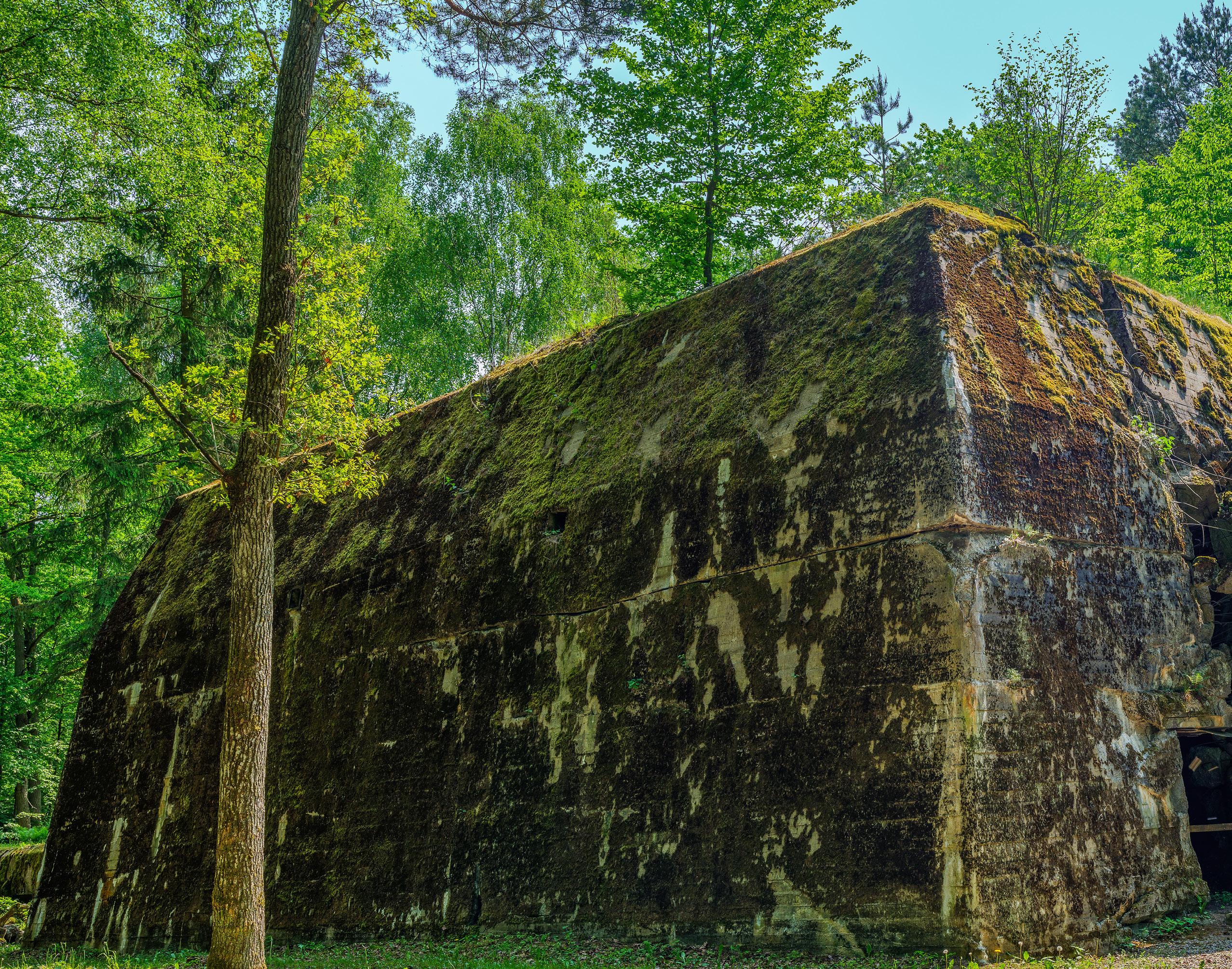
The Wolf’s Lair
The Wolf’s Lair (Wolfsschanze), located near Kętrzyn in northeastern Poland, was Adolf Hitler’s primary military headquarters during much of World War II. Hidden deep in the dense Masurian forests, this massive complex served as the nerve center for the German Eastern Front operations from 1941 to 1944, including the planning of key campaigns like the invasion of the Soviet Union under Operation Barbarossa.
Constructed with secrecy and heavily camouflaged, the Wolf’s Lair comprised around 200 buildings, including bunkers, barracks, and air-raid shelters. It was equipped with the highest security measures, including landmines and multiple security zones to protect the Nazi leadership. Hitler spent over 800 days here, and it was from the



Wolf’s Lair that many strategic decisions regarding the war were made. The site is also infamous for the July 20, 1944 assassination attempt on Hitler, orchestrated by Colonel Claus von Stauffenberg. The failed plot, known as Operation Valkyrie, attempted to kill Hitler with a bomb placed in a meeting room. Hitler survived the explosion, and the conspirators were swiftly executed. The Wolf’s Lair was abandoned and partially destroyed by the Germans in 1945 as Soviet forces advanced. Today, the site remains a historical monument, with the remnants of bunkers and ruins open to visitors. It stands as a haunting reminder of the war’s destructive impact and a place of reflection on the dark chapter of history it represents.

MasurianLakeDistrict
The Masurian Lake District, located in northeastern Poland, is one of the country’s most scenic and tranquil regions, known for its pristine natural beauty and over 2,000 interconnected lakes. Covering more than 52,000 square kilometers, it is a paradise for nature lovers, outdoor enthusiasts, and those seeking relaxation. The district’s extensive waterways, lush forests, and rolling hills create an ideal environment for a wide range of outdoor activities, making it one of Poland’s premier destinations for eco-tourism. Sailing and kayaking are among the most popular activities in the Masurian Lake District, with Lake Śniardwy and Lake Mamry being the largest and most famous bodies of water. Boating enthusiasts can explore the region through
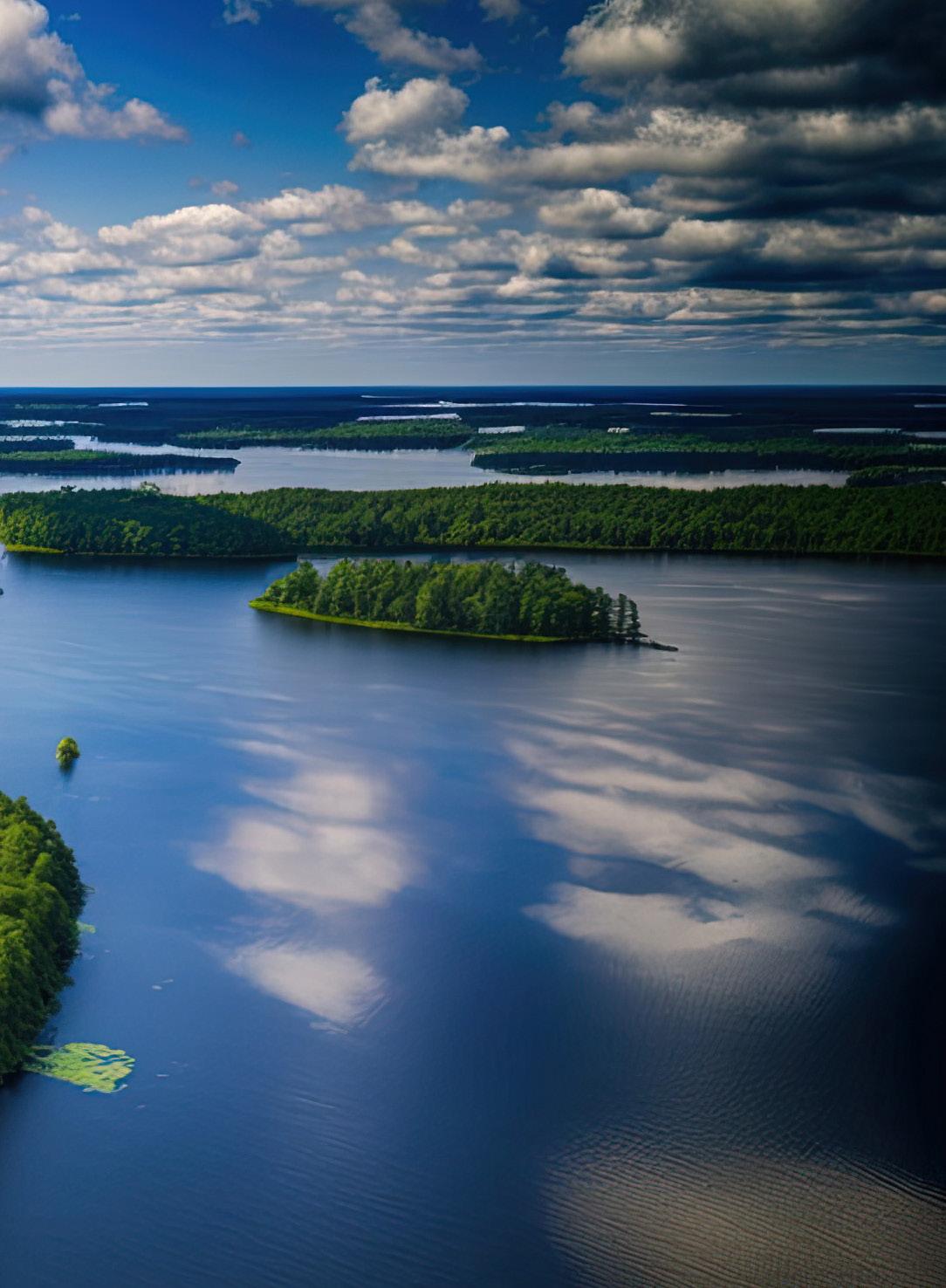
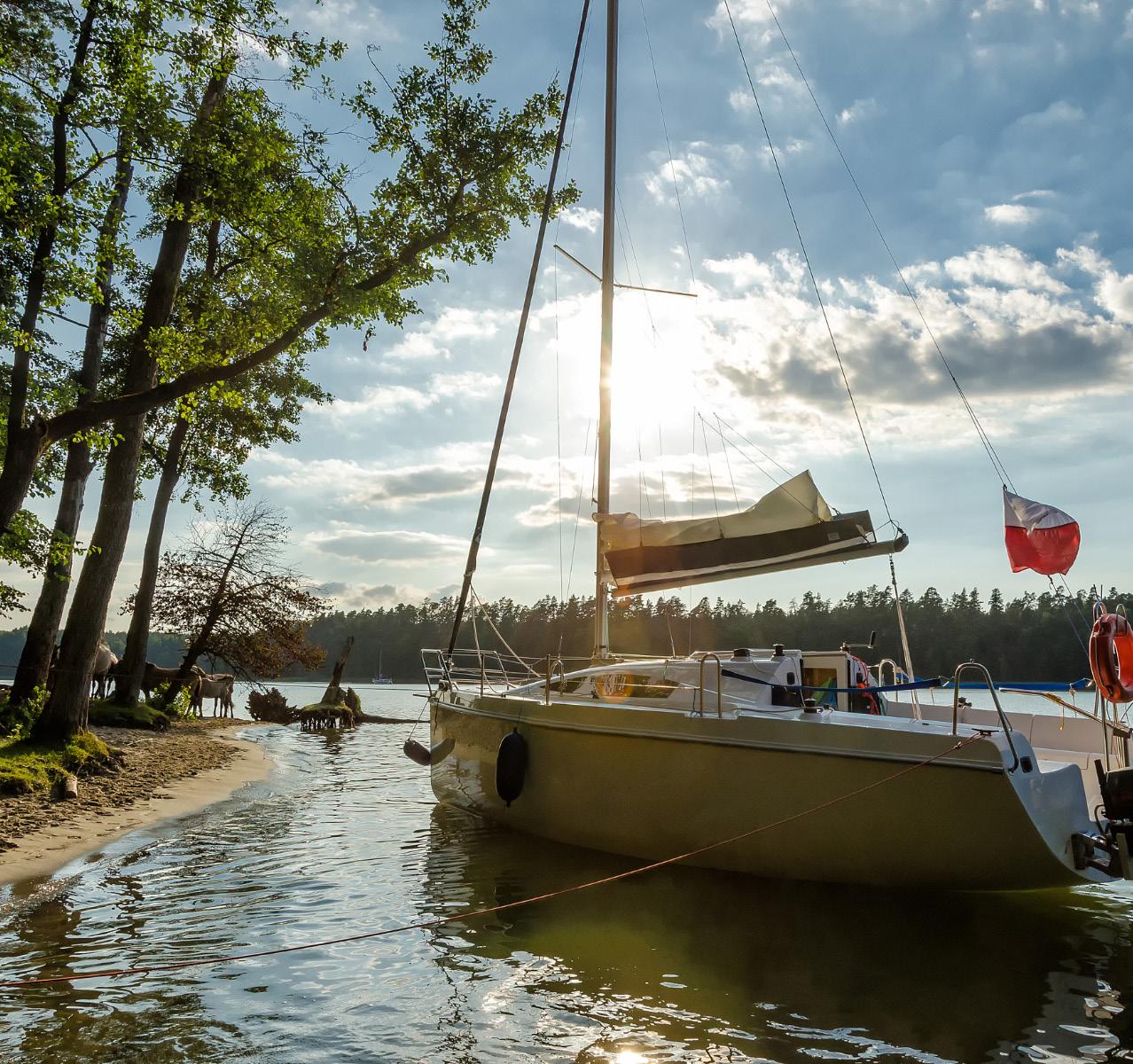

its extensive network of lakes and canals, while those seeking adventure can enjoy fishing, hiking, or cycling through the picturesque landscapes. The region is also rich in wildlife, home to rare bird species such as white-tailed eagles, as well as deer, beavers, and even bison in the surrounding forests. For history buffs, the district offers historical attractions, including the Wolf’s Lair (Wolfsschanze), Adolf Hitler’s World War II headquarters, located near Kętrzyn. The Masurian Lake District’s serene beauty, combined with its diverse outdoor activities and cultural heritage, makes it a favorite retreat for both Polish visitors and international travelers, offering a perfect blend of nature and history.
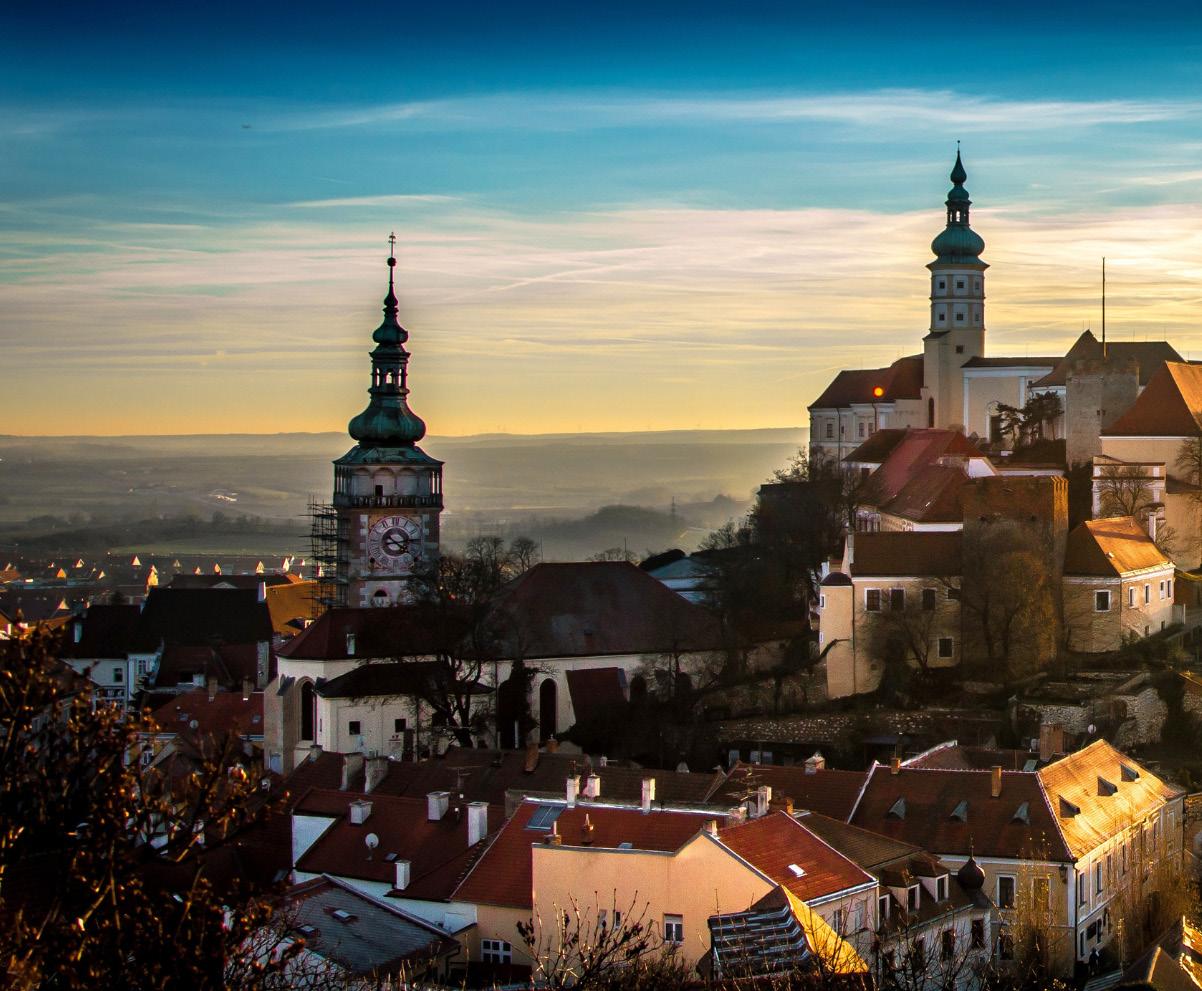
Introduction
Welcome to the Czech Republic, a country rich in history, culture, and architectural beauty. Nestled in the heart of Europe, the Czech Republic offers travelers a unique blend of medieval charm, vibrant cities, and stunning landscapes. Begin your journey in Prague, the “City of a Hundred Spires,” where you can explore the fairy-tale Prague Castle, stroll across the iconic Charles Bridge, and wander through the cobbled streets of Old Town Square, home to the famous Astronomical Clock. The city’s Gothic and Baroque architecture tells the story of centuries past. Beyond Prague, the Czech Republic boasts enchanting towns like Český Krumlov, with its winding rivers and

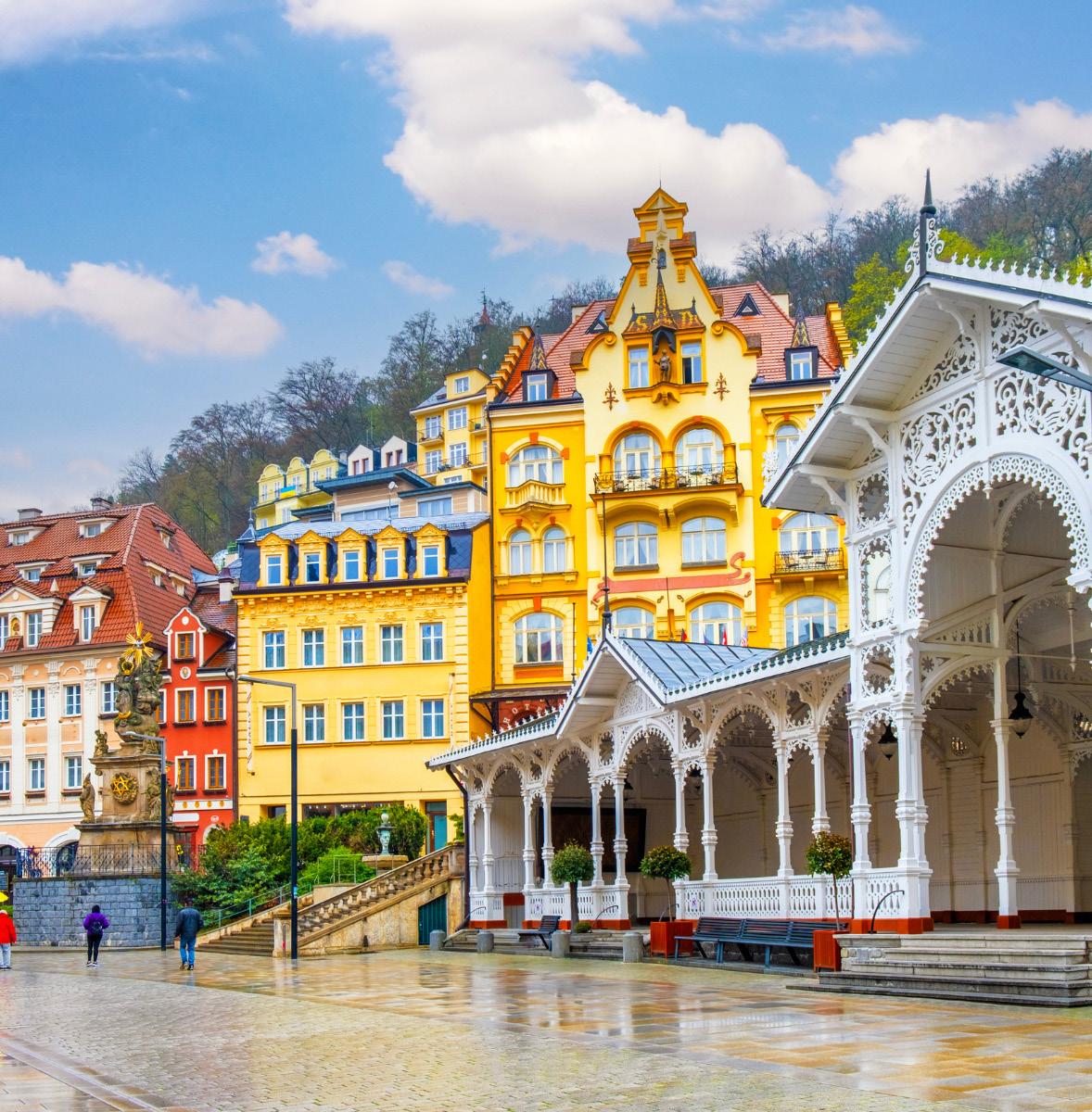

Renaissance charm, and Karlovy Vary, renowned for its healing hot springs and elegant spas. For history lovers, a visit to Kutná Hora’s Bone Church or the medieval town of Telč offers fascinating glimpses into the past. Czech culture is steeped in tradition, from the classical music of composers like Dvořák and Smetana to its world-famous beer. The country’s vibrant folk traditions, colorful festivals, and hearty cuisine create an immersive cultural experience. Whether you’re exploring castles, hiking through Bohemian forests, or savoring a pint in a local pub, the Czech Republic promises an unforgettable journey filled with history, culture, and charm.
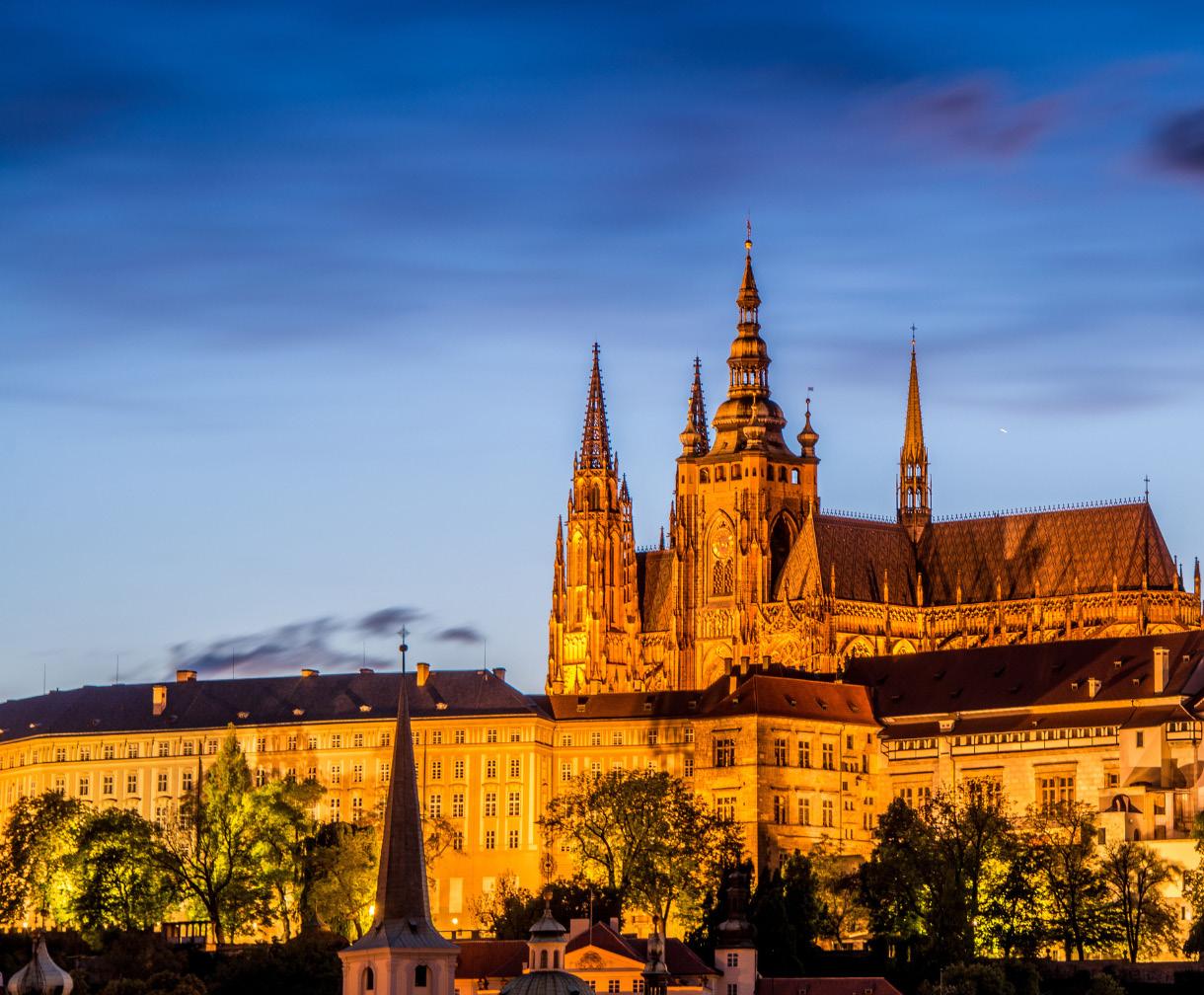
Prague Castle
Prague Castle, known as Pražský hrad in Czech, is a historic fortress that dominates the skyline of Prague, the capital of the Czech Republic. It is one of the largest castle complexes in the world, covering an area of about 70,000 square meters. This UNESCO World Heritage Site sits on a hilltop overlooking the Vltava River, serving as the political and cultural heart of the country for over a millennium. The castle’s origins date back to the 9th century when it was founded by Prince Bořivoj of the Přemyslid dynasty. Over the centuries, Prague Castle has been expanded and renovated, reflecting various architectural styles, including Romanesque, Gothic, Renaissance, and Baroque. One of its most iconic structures is the stunning Gothic
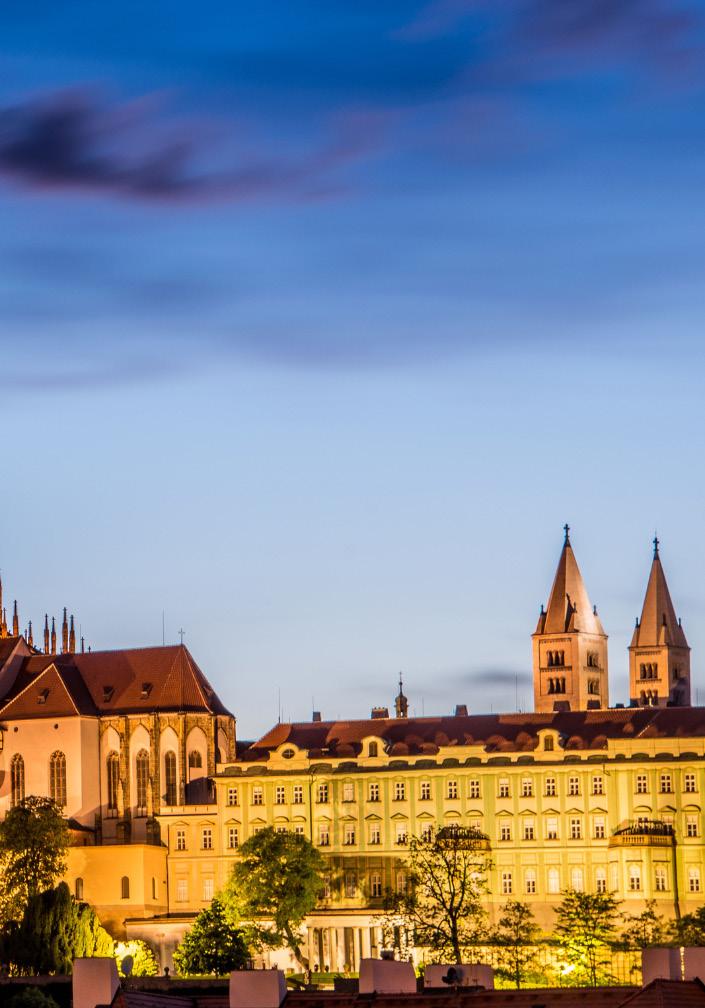

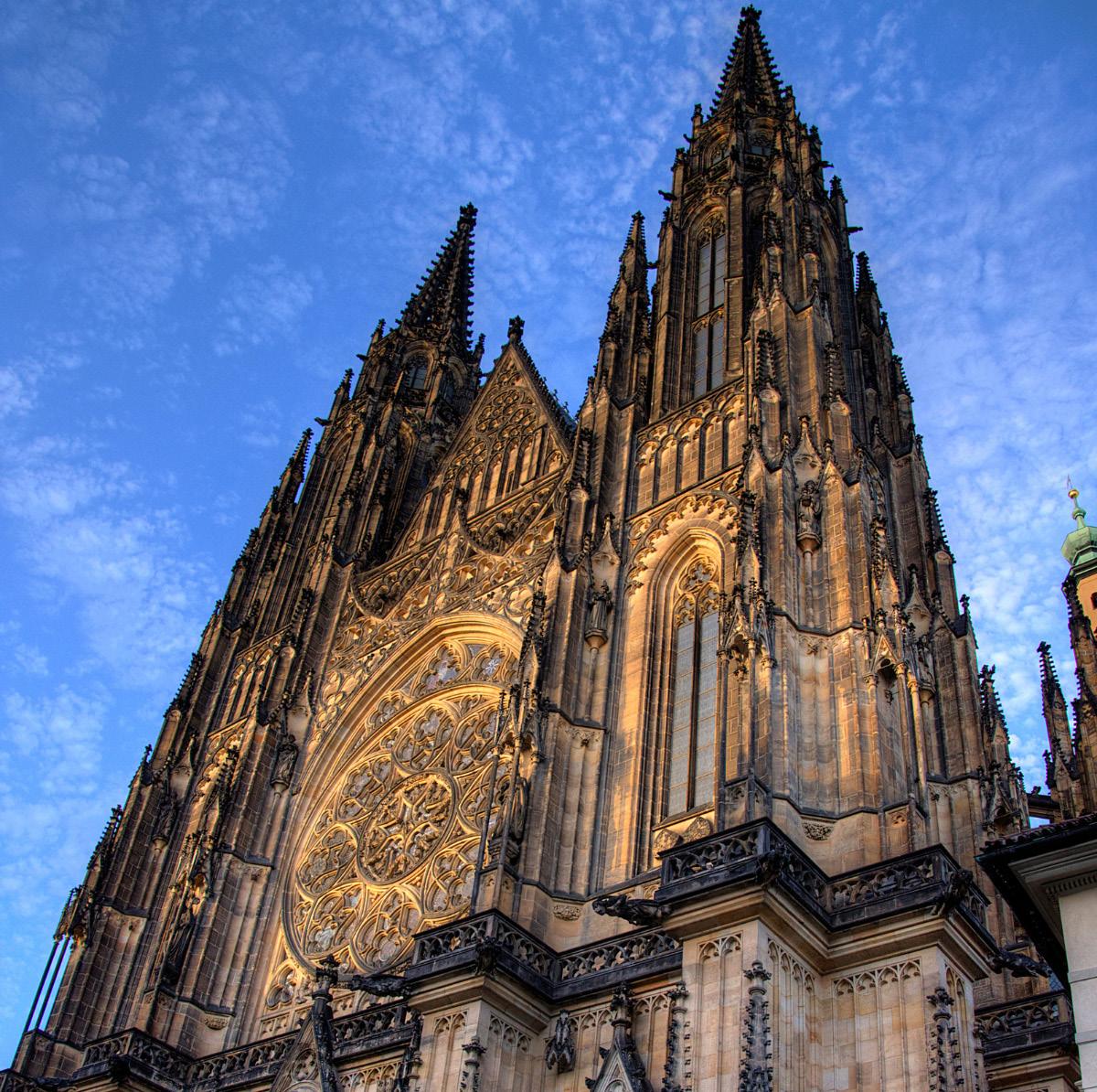
St. Vitus Cathedral, which houses the tombs of Bohemian kings and Holy Roman Emperors. Historically, Prague Castle has been the seat of Czech monarchs, and today it serves as the official residence of the Czech president. The castle complex includes a series of palaces, churches, and gardens, each representing different periods of Czech history. Notable sites include the Old Royal Palace, the Basilica of St. George, and the picturesque Golden Lane, a narrow street lined with colorful houses that once housed castle guards and artisans. Prague Castle is not just a historical monument but also a vibrant cultural hub, hosting exhibitions, concerts, and official ceremonies. It remains a symbol of Czech heritage and statehood, drawing millions of visitors annually.
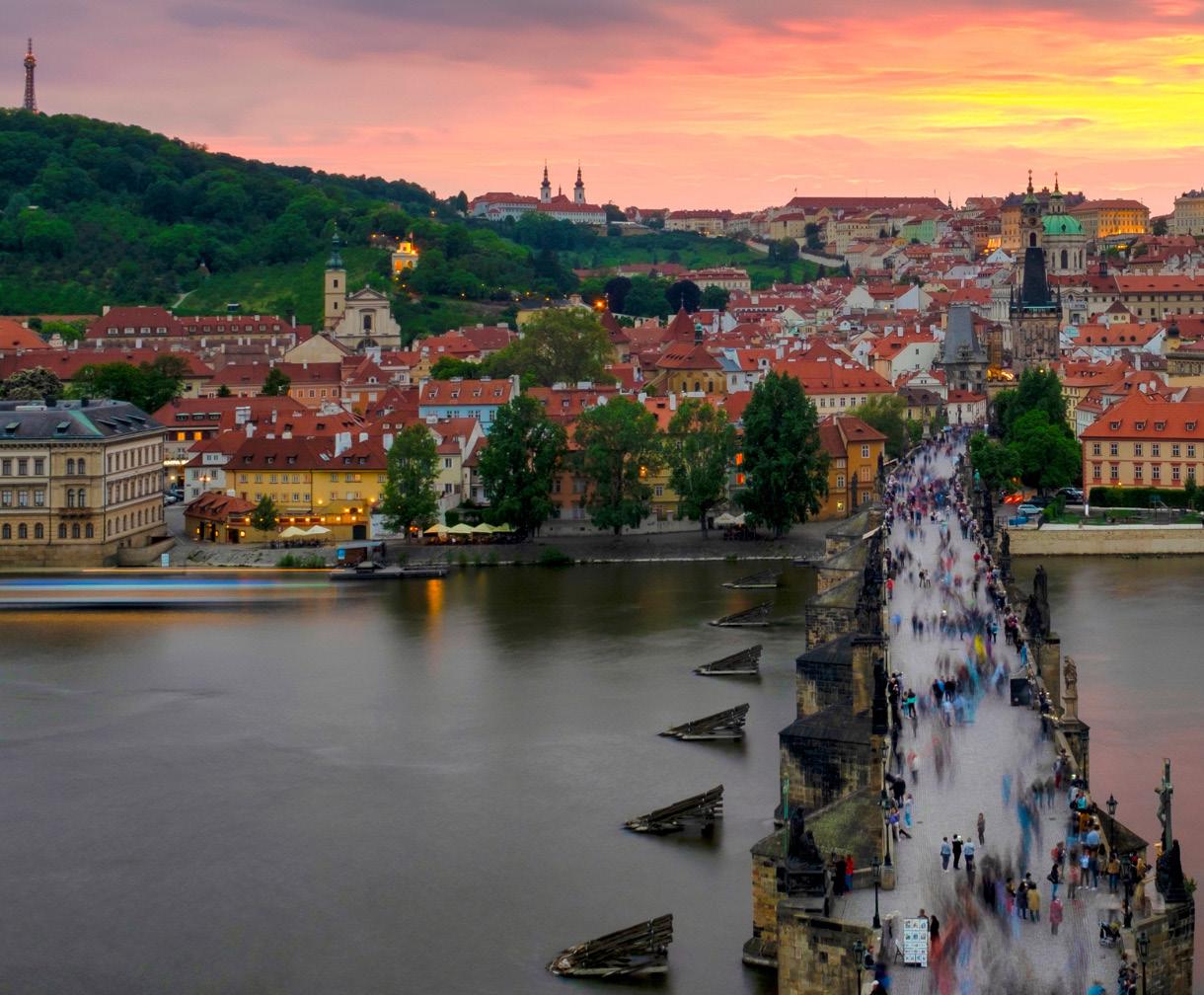
Charles Bridge
Charles Bridge (Karlův most) is one of Prague’s most iconic landmarks, spanning the Vltava River and connecting the Old Town with the Lesser Town (Malá Strana).
Construction began in 1357 under the reign of King Charles IV and was completed at the start of the 15th century. The bridge replaced the older Judith Bridge, which was destroyed by a flood in 1342. The Charles Bridge is a masterpiece of Gothic architecture, originally known as the Stone Bridge or Prague Bridge until the 19th century. It stretches 516 meters (1,693 feet) and rests on 16 arches. The bridge’s surface is made of cobblestones, and along its length are 30 statues, most of which


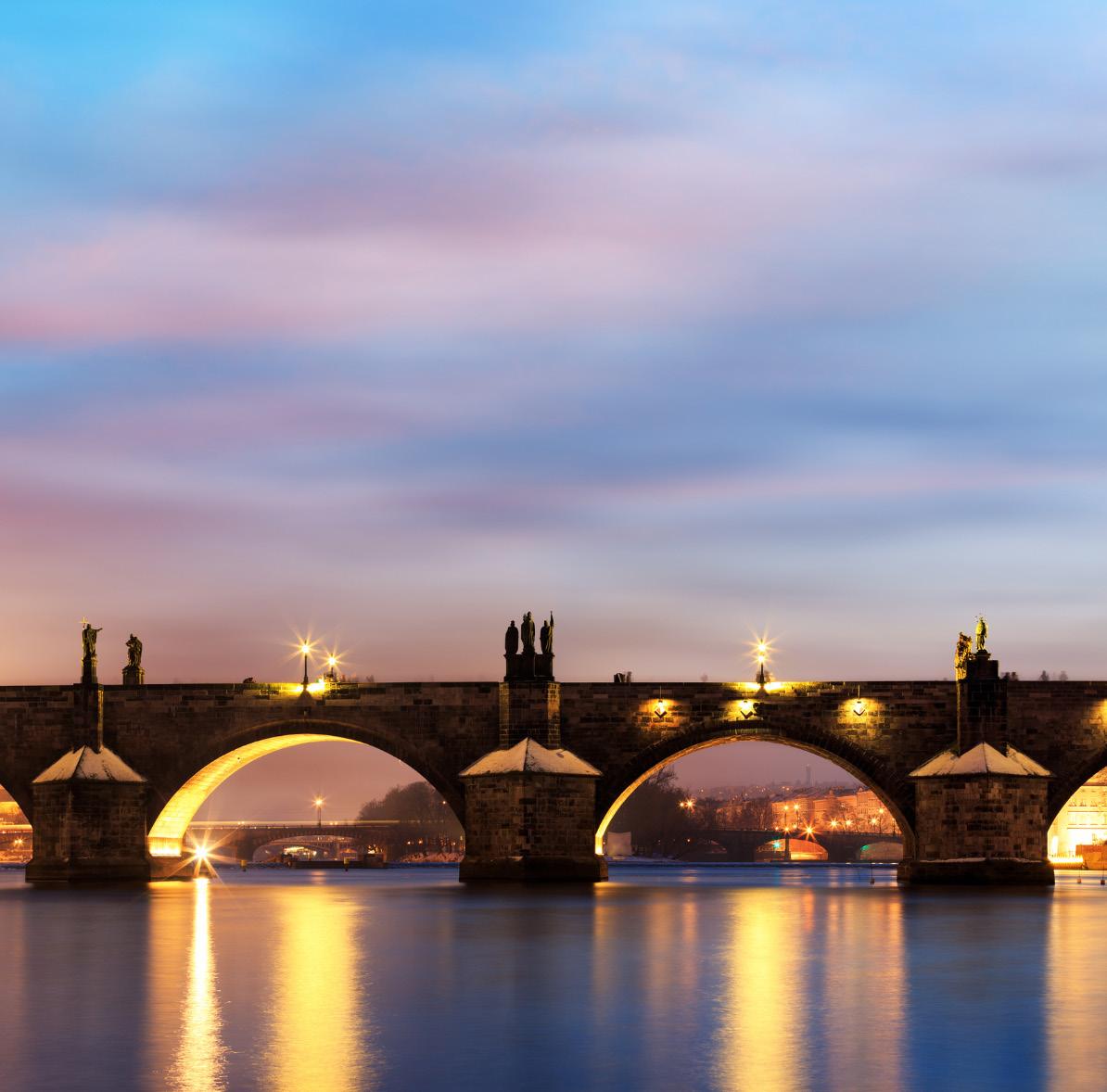
were erected between 1683 and 1714. These statues depict saints and religious figures, adding to the bridge’s spiritual and historical significance. Today, many of the statues are replicas; the originals are preserved in the National Museum due to damage from weathering. Throughout history, the bridge has been a vital trade route and played a key role in the development of Prague as a cultural and commercial center. Charles Bridge has also been the setting for many historical events, including battles and royal processions. Today, it’s a pedestrian bridge, often filled with artists, street performers, and tourists, offering stunning views of Prague’s skyline and the nearby Prague Castle. Charles Bridge remains a symbol of Prague’s rich history, attracting millions of visitors annually as one of Europe’s most beautiful and historic bridges.

PragueOldTownSquare
Prague’s Old Town Square (Staroměstské náměstí) is the heart of the Czech capital, blending medieval charm with a lively modern atmosphere. It dates back to the 12th century and has been a central marketplace and hub for centuries. This iconic square is flanked by Gothic, Baroque, and Romanesque buildings that reflect Prague’s rich architectural history. One of the most famous landmarks in the square is the Old Town Hall, home to the astronomical clock (Orloj), a medieval marvel dating to 1410. Visitors gather every hour to watch the clock’s animated procession of the apostles and other figures. The square is also dominated by the towering Gothic Church
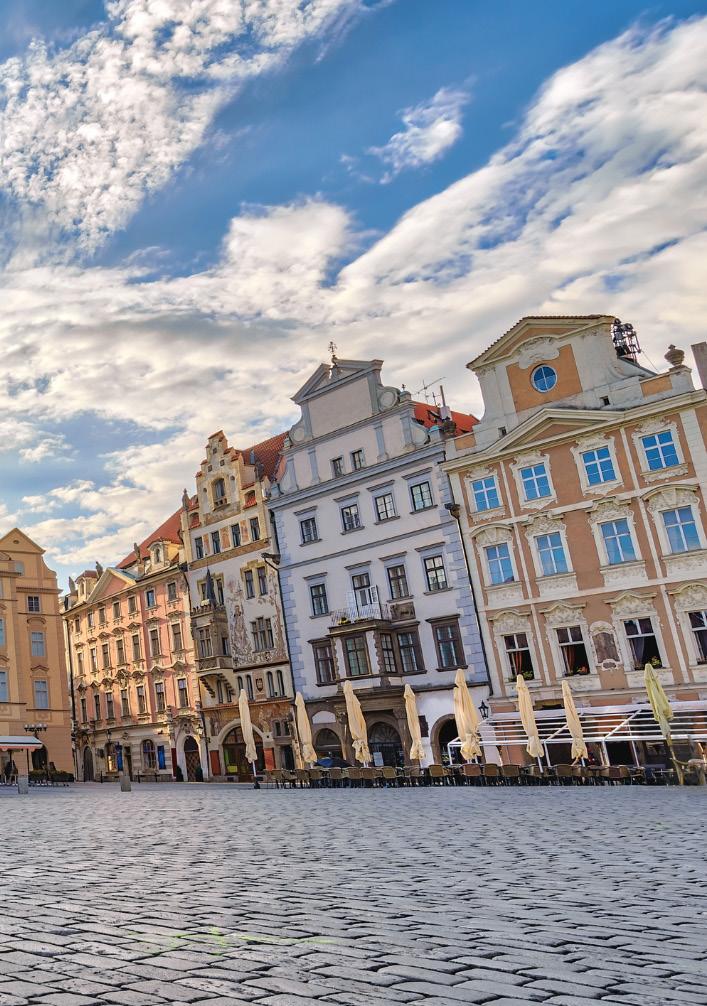


of Our Lady before Týn and the Baroque St. Nicholas Church, providing a striking contrast of architectural styles. Throughout history, the square has witnessed pivotal events, including public executions during the Thirty Years’ War and anti-communist protests during the Velvet Revolution of 1989. Today, it remains a vibrant public space hosting Christmas markets, concerts, and cultural events. The square’s mix of historical significance and beauty makes it a favorite destination for both tourists and locals. Cafés and restaurants line its perimeter, offering views of the square’s attractions and providing a perfect place to absorb the atmosphere of Prague’s historic core. Old Town Square exemplifies Prague’s blend of history, culture, and vibrant city life.
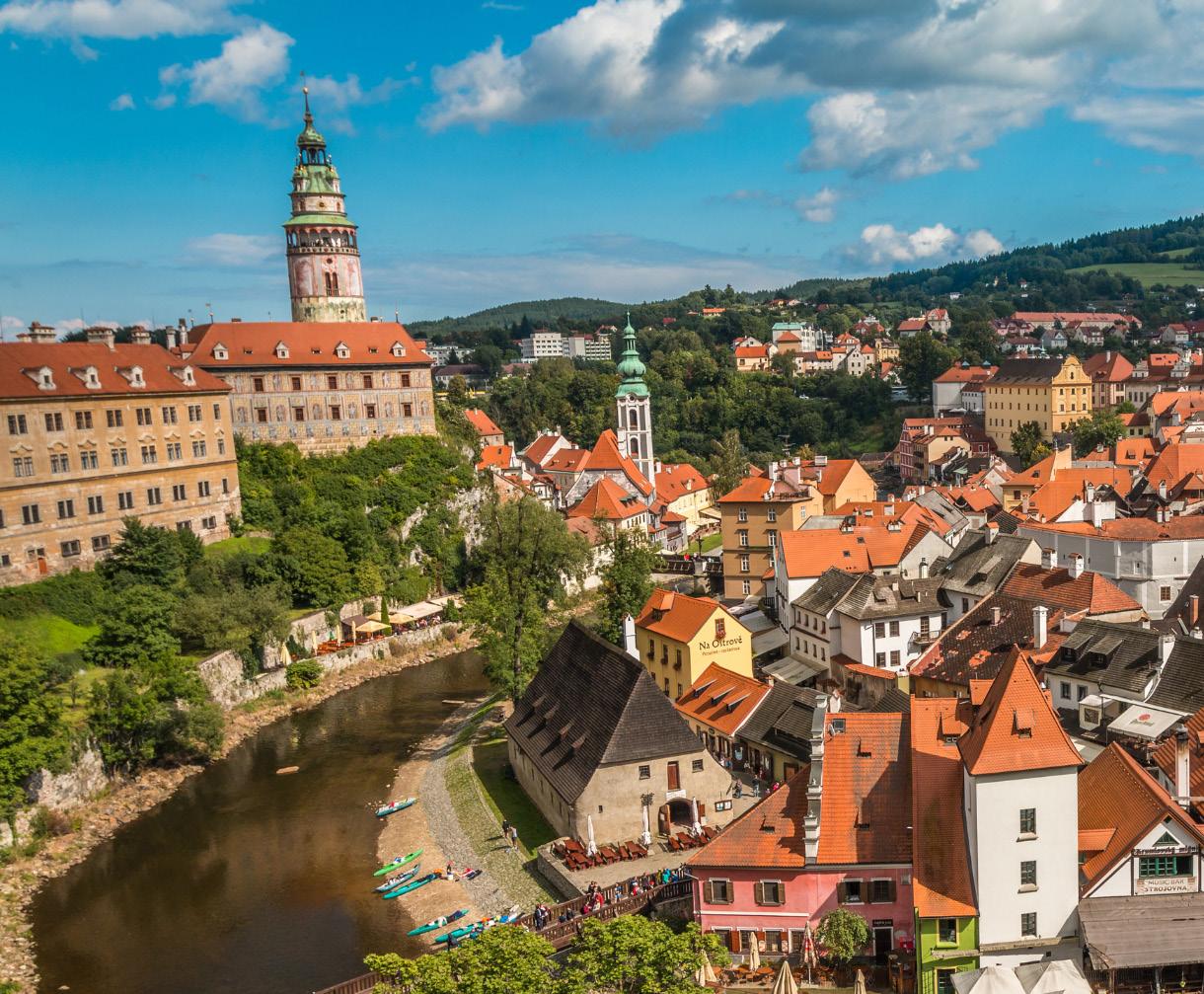
Český Krumlov
**Český Krumlov** is a picturesque town in the South Bohemian Region of the Czech Republic, renowned for its fairy-tale charm and well-preserved medieval architecture. Situated along the winding Vltava River, the town’s historic center is a UNESCO World Heritage Site, celebrated for its Gothic, Renaissance, and Baroque buildings.
At the heart of Český Krumlov is its iconic **castle complex**, the second largest in the Czech Republic, after Prague Castle. Built between the 13th and 17th centuries, the castle boasts a unique blend of architectural styles, including an impressive Renaissance tower that offers panoramic views of the town and surrounding landscape. The castle grounds also feature a Baroque theater and beautiful gardens. One of

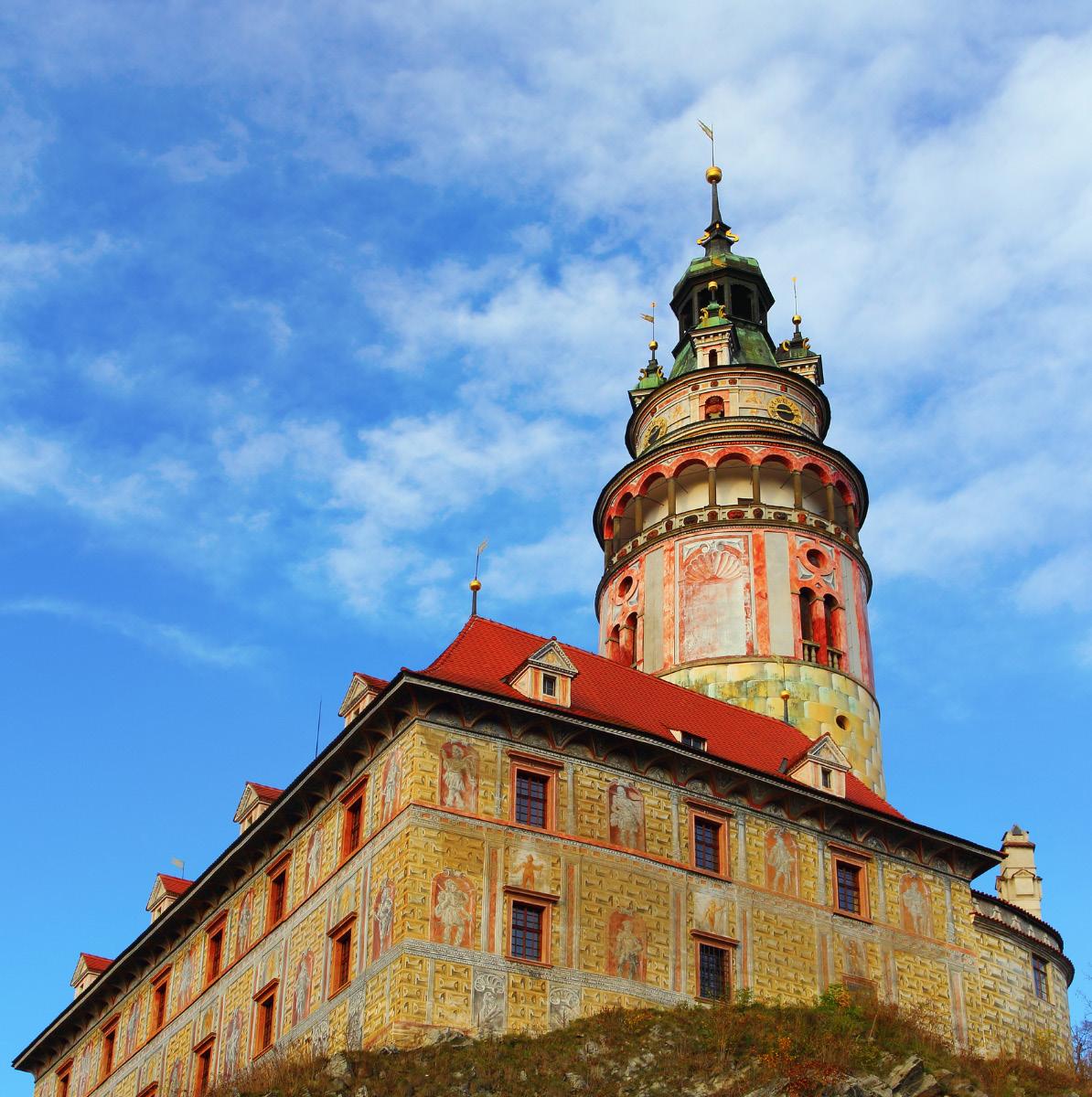

the town’s most striking features is the **Old Town**, a maze of narrow, cobbled streets lined with colorful medieval houses, many of which have been converted into shops, galleries, and cafes. The river’s horseshoe-shaped bend gives the town its distinctive layout, enhancing its scenic beauty. Český Krumlov is also a cultural hub, hosting events such as the **Five-Petalled Rose Festival**, which reenacts medieval traditions, and the **International Music Festival**, attracting artists and visitors worldwide. Its vibrant arts scene is complemented by numerous museums, including the Egon Schiele Art Centrum. With its rich history, stunning architecture, and artistic heritage, Český Krumlov is a captivating destination that offers a glimpse into the Czech Republic’s past and present charm.

Karlštejn Castle
Karlštejn Castle, one of the most iconic and historically significant castles in the Czech Republic, was founded in 1348 by Charles IV, King of Bohemia and Holy Roman Emperor. Located about 30 kilometers southwest of Prague, this Gothic fortress was originally constructed to safeguard the royal treasures, including the Imperial Regalia, holy relics, and the crown jewels of the Holy Roman Empire. The castle is strategically perched on a hill, providing both defensive advantages and scenic views of the surrounding countryside. Its multi-tiered design reflects the hierarchical significance of its spaces. The most sacred area, the Chapel of the Holy Cross, located in the Great Tower, was a spiritual sanctuary for Charles IV and housed some of



his most precious items. The walls of the chapel are decorated with semi-precious stones and gold, and adorned with a unique collection of panel paintings by Master Theodoric, the court painter. Karlštejn Castle underwent numerous renovations over the centuries, including a significant neo-Gothic restoration in the 19th century led by architect Josef Mocker. This effort revived its medieval appearance, which continues to attract many visitors today. Apart from its architectural beauty and historical importance, the castle has become a symbol of Czech cultural heritage, frequently featured in literature, film, and national folklore. As a UNESCO World Heritage site nominee, Karlštejn remains a prominent tourist destination, drawing visitors with its rich history and stunning medieval atmosphere.
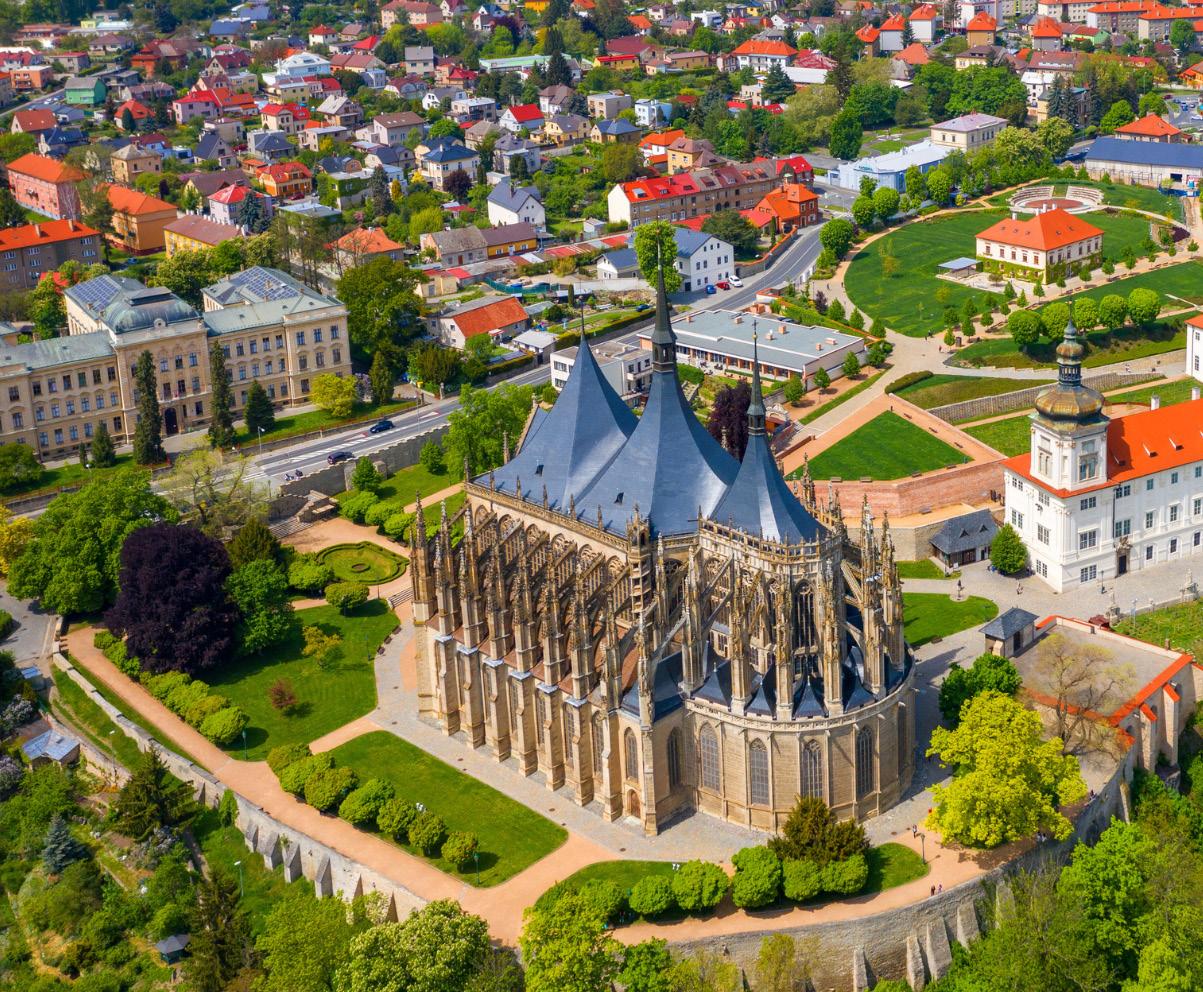
Kutná Hora
Kutná Hora, a historic town in the Czech Republic, is renowned for its rich cultural and architectural heritage. Located about 70 kilometers east of Prague, the town’s origins date back to the 13th century, when it became a major center for silver mining. The discovery of silver deposits led to rapid growth, and by the 14th century, Kutná Hora was one of the wealthiest cities in Europe, rivaling Prague in significance.
One of the town’s most iconic landmarks is the **Sedlec Ossuary**, a small chapel adorned with the bones of an estimated 40,000 people, arranged in elaborate designs, including chandeliers and pyramids. This macabre yet fascinating site draws visitors from around the world. Another notable attraction is the **Cathedral of St. Barbara**,



a stunning example of Gothic architecture and a UNESCO World Heritage site. This cathedral, built between the 14th and 16th centuries, reflects the town’s former prosperity and religious significance. Kutná Hora also played a pivotal role in the economic development of medieval Europe. The town’s Royal Mint produced vast amounts of coinage, further establishing its influence. However, by the 16th century, silver reserves dwindled, leading to the town’s gradual decline. Today, Kutná Hora is celebrated for its well-preserved medieval buildings and historical charm, making it a popular tourist destination. The town’s blend of Gothic and Baroque architecture, along with its intriguing past, offers visitors a unique glimpse into Central European history.

Český Ráj
Český Ráj (Bohemian Paradise) is a picturesque region in the northeastern part of the Czech Republic, known for its stunning landscapes and unique rock formations. It was designated as the first nature reserve in the country in 1955, highlighting its cultural and natural importance. The area is rich in dense forests, rolling hills, and medieval castles, offering a blend of natural beauty and historical intrigue. One of the most famous features of Český Ráj is the sandstone rock formations, which have been shaped by erosion over millions of years. The rock formations, like Prachovské Skály and Hruboskalsko, are a favorite destination for hikers, climbers, and nature enthusiasts. These towering cliffs and intricate pathways offer breathtaking views and
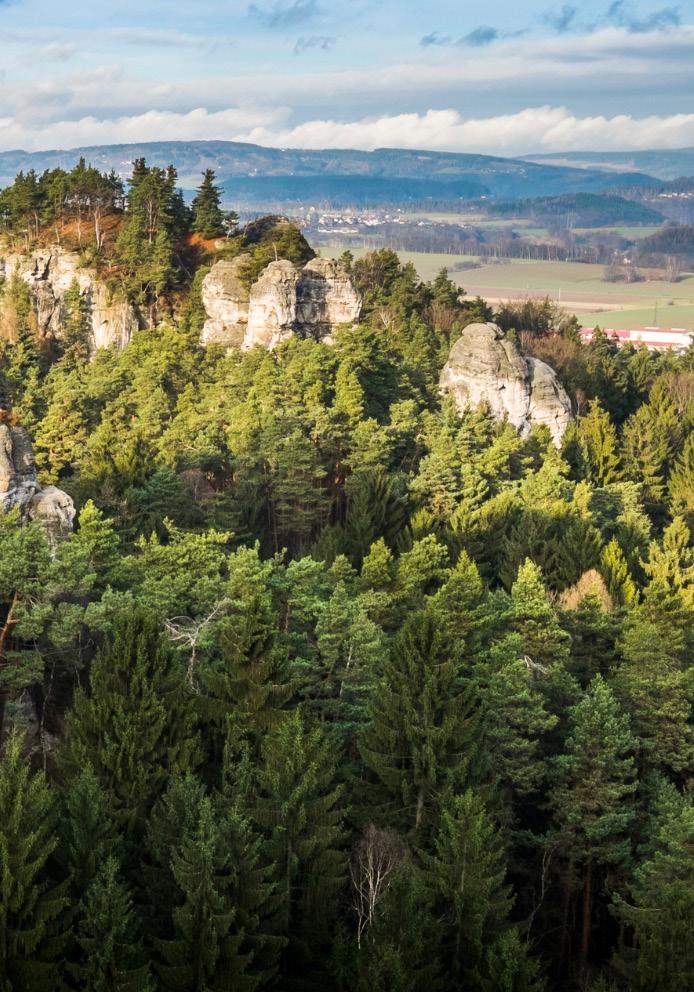


challenging routes for adventurers. Český Ráj is also home to several medieval castles, including the iconic Trosky Castle, perched dramatically on volcanic spires. Other notable castles in the region include Kost and Hrubá Skála, which add a historical dimension to the area’s allure. Apart from its natural and historical attractions, Český Ráj has a well-developed network of walking and cycling trails, making it a popular destination for outdoor activities. Visitors can explore the area’s rich flora and fauna, quaint villages, and traditional Czech architecture. The combination of geological wonders, historical sites, and outdoor recreation makes Český Ráj a must-visit destination for those seeking both adventure and tranquility in the Czech Republic.

Hluboká Castle
Hluboká Castle, located in the South Bohemian Region of the Czech Republic, is one of the country’s most stunning and well-preserved historic landmarks. Originally built in the 13th century as a Gothic fortress, the castle underwent several renovations, reflecting various architectural styles over the centuries. Its current appearance, influenced by England’s Windsor Castle, stems from a major reconstruction in the mid-19th century under the Schwarzenberg family, who owned the estate from 1661. Hluboká Castle was remodeled in the Romantic Gothic Revival style, with intricate white façades, turrets, and battlements. The castle is surrounded by vast, manicured gardens, featuring English-style landscaped areas and baroque-style terraces, adding
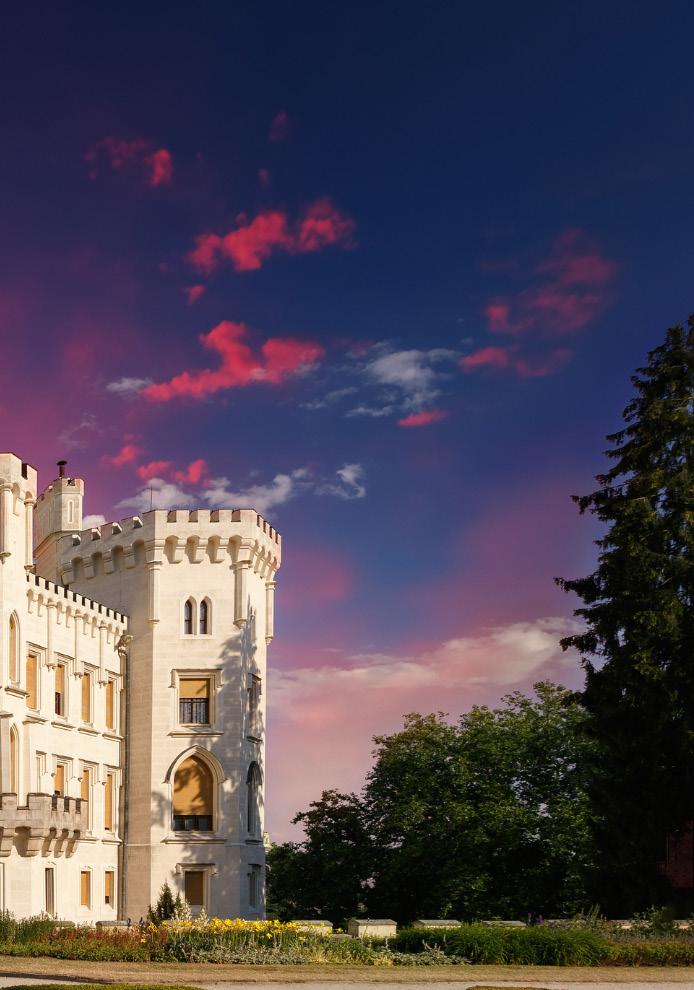

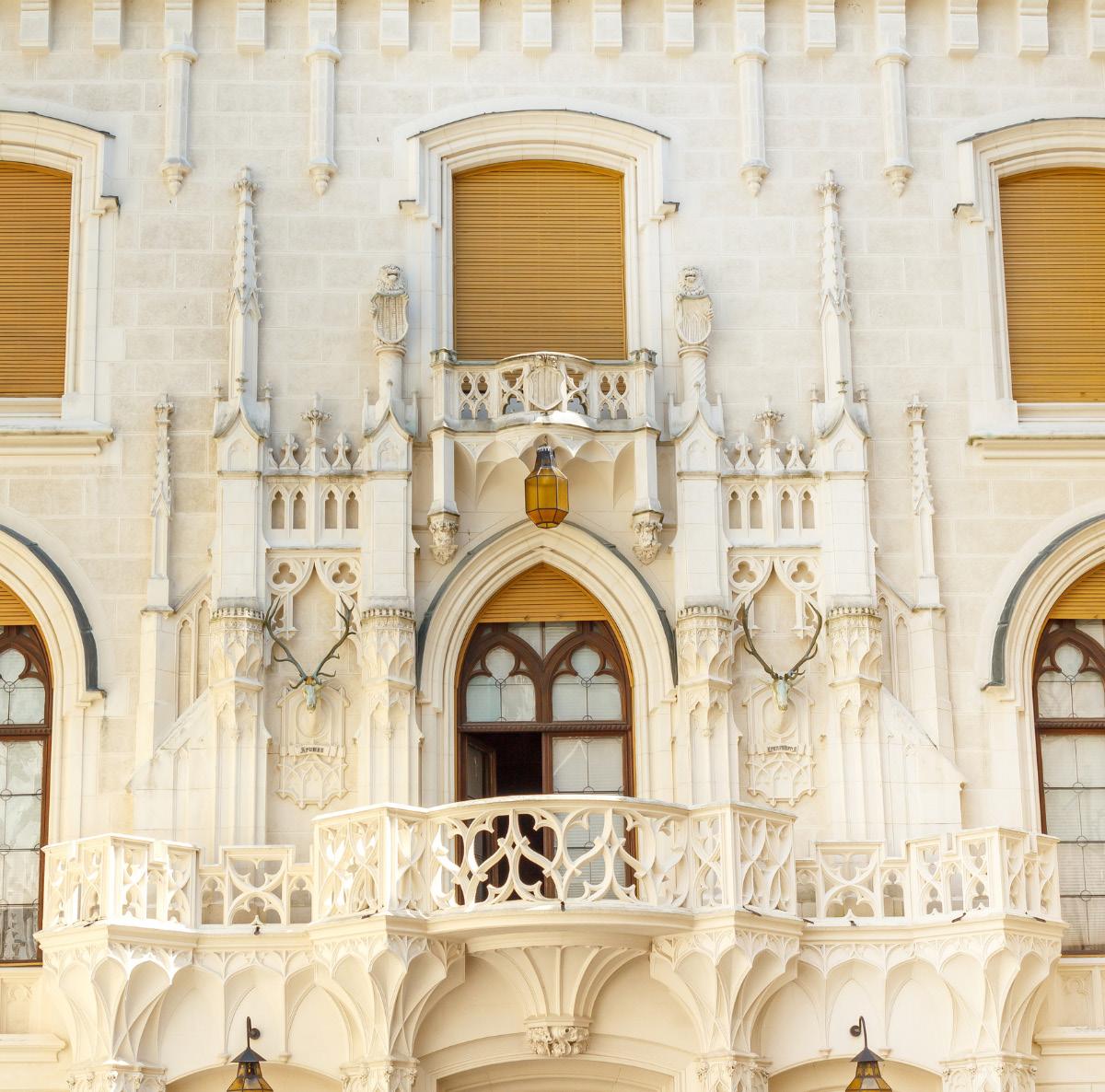
to its fairy-tale-like charm. Inside, the castle boasts lavish interiors with wood-paneled walls, elaborate ceilings, and a remarkable collection of paintings, tapestries, and antique furniture. Its library and armory are particularly noteworthy, showcasing the wealth and power of the Schwarzenberg family. Today, Hluboká Castle is a popular tourist destination, offering guided tours that delve into its rich history and stunning art collection. It also hosts various cultural events and exhibitions throughout the year. The castle’s picturesque location overlooking the Vltava River and its proximity to other historic towns, such as Český Krumlov, makes it a significant cultural landmark in the Czech Republic and an example of European aristocratic splendor.

Pilsner Urquell Brewery
Pilsner Urquell Brewery, located in Plzeň (Pilsen), Czech Republic, is one of the world’s most iconic beer producers, renowned for creating the first-ever pale lager, known as Pilsner, in 1842. The brewery’s history began when local brewers, dissatisfied with the quality of their beer, invited Bavarian brewer Josef Groll to introduce new brewing techniques. Groll combined soft Pilsen water, Saaz hops, pale malts, and a bottom-fermenting yeast strain to produce a crisp, golden beer with a distinctive hop bitterness. This new style quickly gained popularity and became a template for lagers worldwide. Pilsner Urquell, which translates to “original source of Pilsner,” remains the world’s oldest Pilsner. Its influence is immense, as over 70%

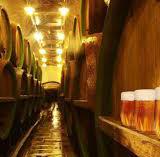

of global beer production today is derived from the Pilsner style. Despite changes in ownership and modernization, the brewery still employs traditional methods, including triple decoction mashing and fermentation in open wooden vats, ensuring the beer’s authenticity and consistency. Today, Pilsner Urquell is celebrated not only for its taste but for its cultural significance, representing a pivotal moment in brewing history. The brewery also plays a significant role in Czech heritage, with beer tours offering visitors a chance to see its extensive cellars and learn about its centuriesold brewing techniques. The brewery remains a cornerstone of Czech beer culture, and its contributions to brewing innovations have earned it a prominent place in the global beer landscape.

Hranice Abyss
The **Hranice Abyss** (Hranická Propast) is the world’s deepest known freshwater cave, located near the town of Hranice in the Czech Republic. Situated within the Hranice Karst region, the abyss plunges to an astonishing depth of over **1,000 meters** (3,280 feet), with approximately 450 meters confirmed as submerged underwater. In 2016, a remotely operated underwater vehicle (ROV) descended to a depth of 404 meters in the water-filled section, but it was unable to reach the bottom, indicating the potential for even greater depths. Further exploration in 2022 confirmed a depth of around 450 meters. The abyss was formed through the process of karstification, where slightly acidic water dissolves limestone and other soluble
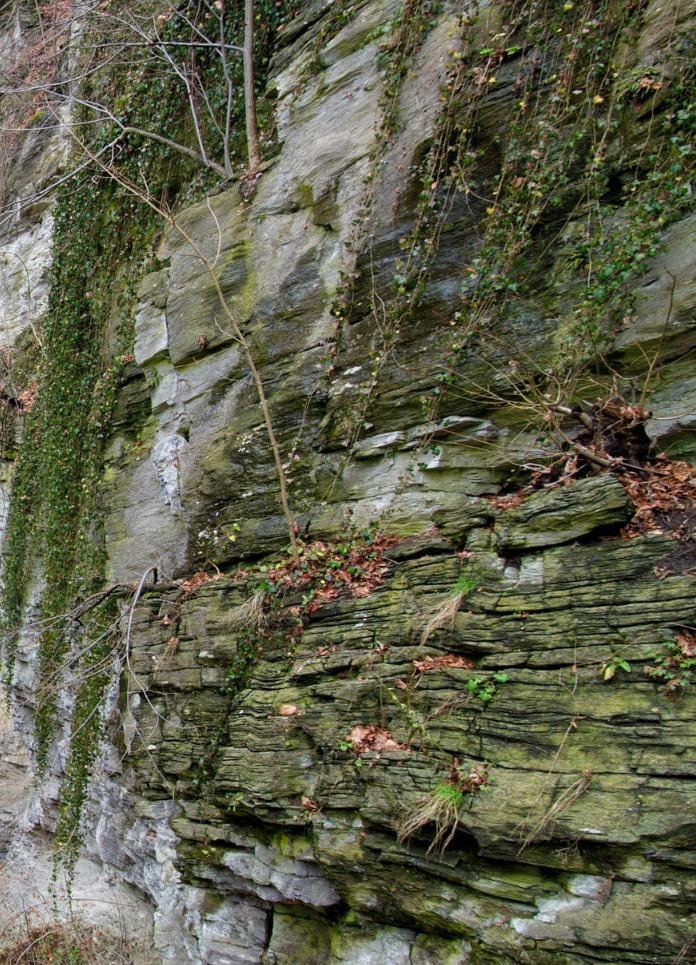


rocks, gradually enlarging cracks and fissures. This geological process has resulted in an underwater cave system of immense size and complexity. The waters of the Hranice Abyss are rich in dissolved carbon dioxide, contributing to its aggressive erosive power. Exploration of the Hranice Abyss has been particularly challenging due to the dangerous conditions, including cold water, narrow passages, and the limits of current underwater technology. Researchers and cave divers continue to study the site to better understand its formation and full extent. The abyss has become a focal point for scientific interest, offering insights into subterranean ecosystems and the geomorphology of deep karst systems. The ongoing exploration of Hranice Abyss may reveal further mysteries of this natural wonder, making it a subject of fascination for geologists and adventurers alike.

Plzeň’s Old Town
Plzeň’s Old Town, located in the heart of the Czech Republic, is a charming and historically rich area that reflects the city’s medieval origins and its importance in Central European history. Founded in 1295 by King Wenceslas II, Plzeň was strategically placed at the confluence of four rivers, which helped it grow into a vital trade center during the Middle Ages. The Old Town’s focal point is the Republic Square (*Náměstí Republiky*), one of the largest medieval squares in Europe. Dominating the square is the Gothic St. Bartholomew’s Cathedral, with its towering 102-meter spire, the tallest in the country. The cathedral’s origins trace back to the late 13th century, and its detailed architecture showcases the craftsmanship of the era.


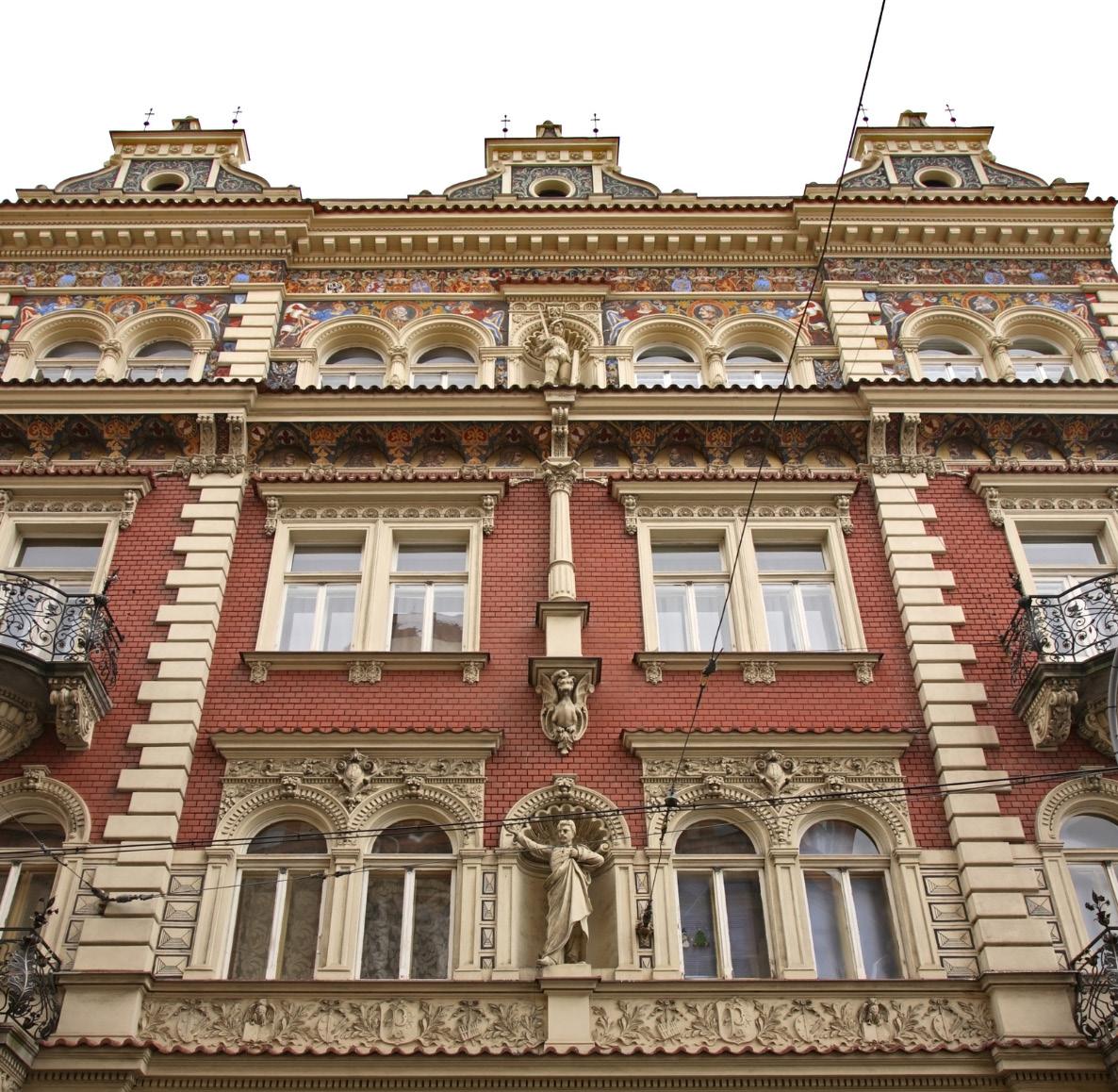
Surrounding the square are colorful Renaissance and Baroque-style townhouses, many of which have been carefully preserved or restored, contributing to the town’s quaint, historical atmosphere. Also located within the Old Town is the Renaissance Plague Column, erected in 1681 to commemorate the town’s survival of a plague outbreak, and the Great Synagogue, a beautiful example of Moorish-Romanesque architecture, built in the late 19th century and one of the largest synagogues in Europe. Plzeň’s Old Town is not only a historical treasure but also a vibrant cultural hub, with museums, galleries, and cafes. Its cobblestone streets, medieval buildings, and cultural heritage make it a popular destination for visitors looking to experience the rich history of the Czech Republic.
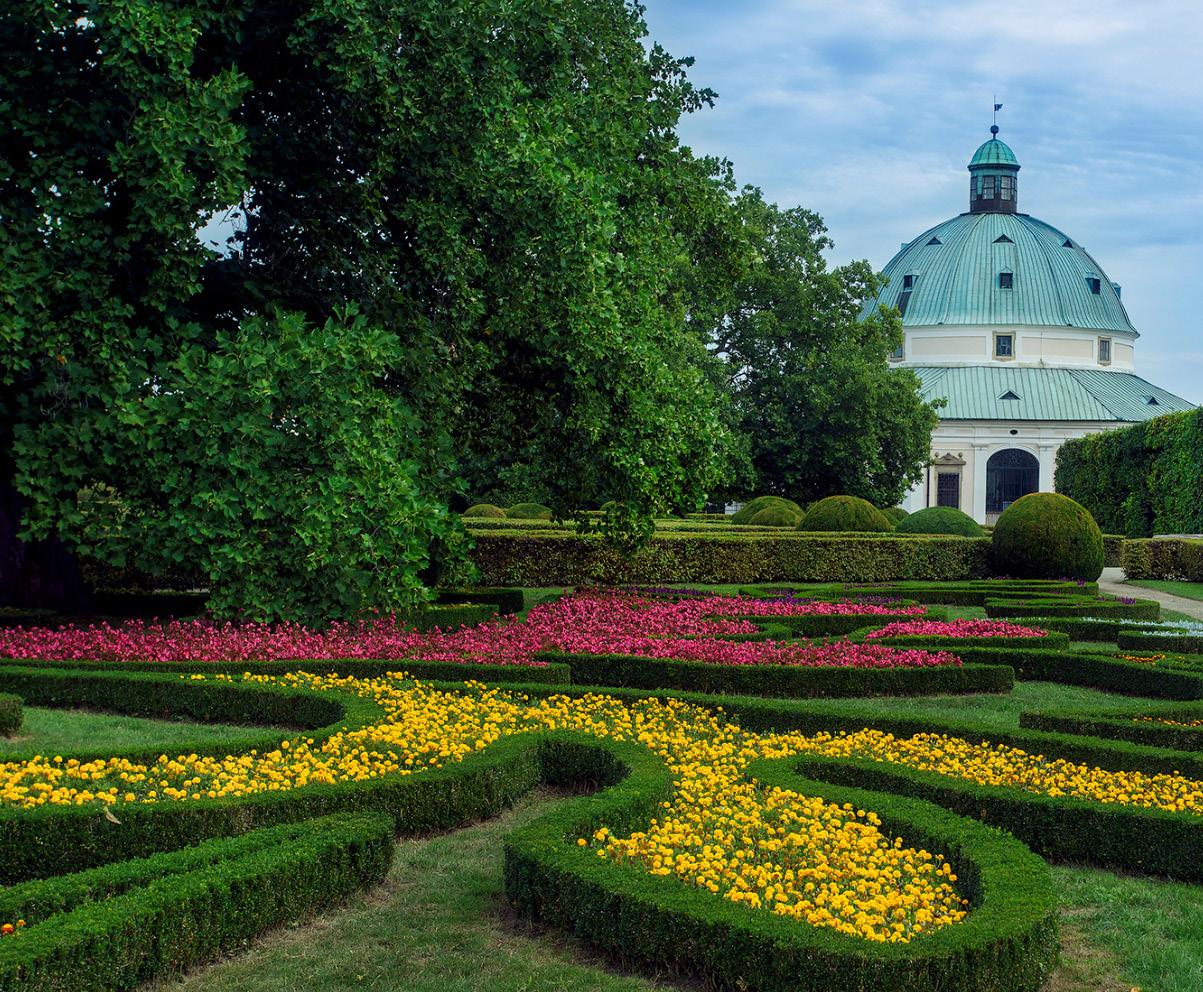
Kroměříž
Kroměříž is a charming historical town located in the Zlín Region of the Czech Republic, renowned for its rich cultural heritage and stunning architecture. It lies along the Morava River and is most famous for its Archbishop’s Palace, a UNESCO World Heritage Site. The palace, originally a 17th-century Baroque residence, is accompanied by two expansive and beautifully maintained gardens, the Flower Garden and the Castle Garden, which are prime examples of Baroque and 19th-century landscaping.
Kroměříž has deep historical roots, dating back to at least the 12th century when it served as a market town. It flourished under the patronage of the bishops of Olomouc, who made it their summer residence. This connection with the Catholic Church not
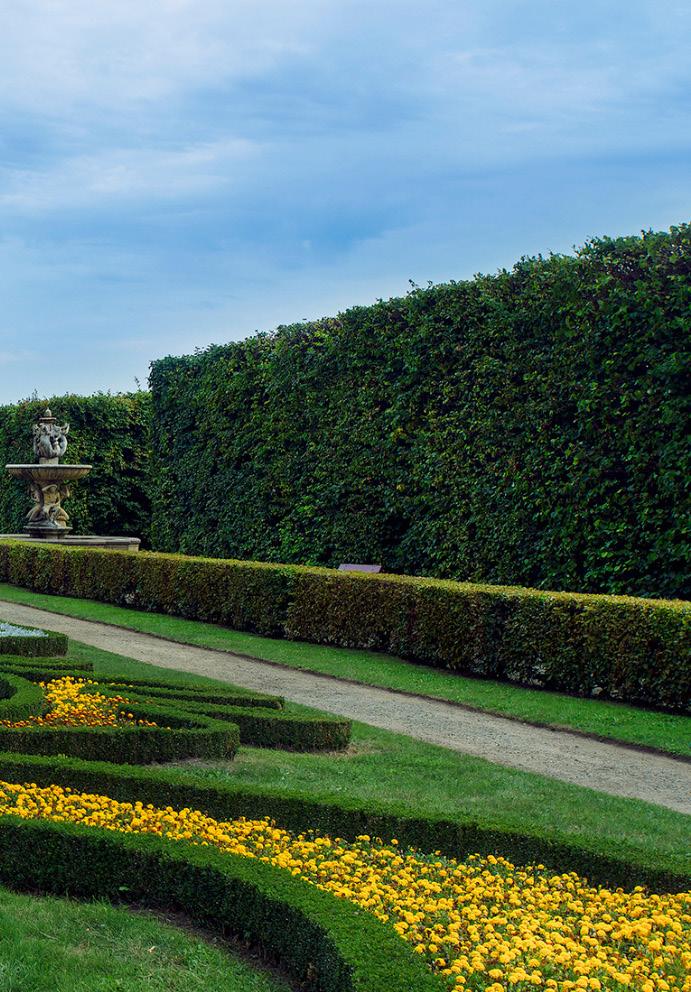


only influenced the town’s religious and architectural character but also made it a center for art and culture, particularly during the Baroque period. The town’s charm lies not only in its historical sites but also in its vibrant town square, surrounded by colorful facades and quaint streets. Kroměříž also played a pivotal role in Czech history, being the site of the 1848 Kroměříž Assembly, where political reforms were discussed during the Revolutions of 1848. Today, Kroměříž attracts visitors for its historical landmarks, including the palace, gardens, and its well-preserved old town, offering a glimpse into the grandeur of Moravian history and architecture, making it a must-see destination in the Czech Republic.

Třebíč
Třebíč is a historic town located in the Vysočina Region of the Czech Republic, known for its rich cultural heritage and well-preserved medieval architecture. One of the town’s most notable features is its Jewish Quarter and the Basilica of St. Procopius, both of which are recognized as UNESCO World Heritage Sites. This recognition highlights the town’s unique historical significance, particularly in the context of Jewish-Christian cultural coexistence during the Middle Ages. The Jewish Quarter of Třebíč is one of the best-preserved in Europe. It provides a rare and comprehensive glimpse into the lives of Jewish communities, with features like synagogues, a Jewish cemetery, and residential homes that date back centuries. The layout of the district


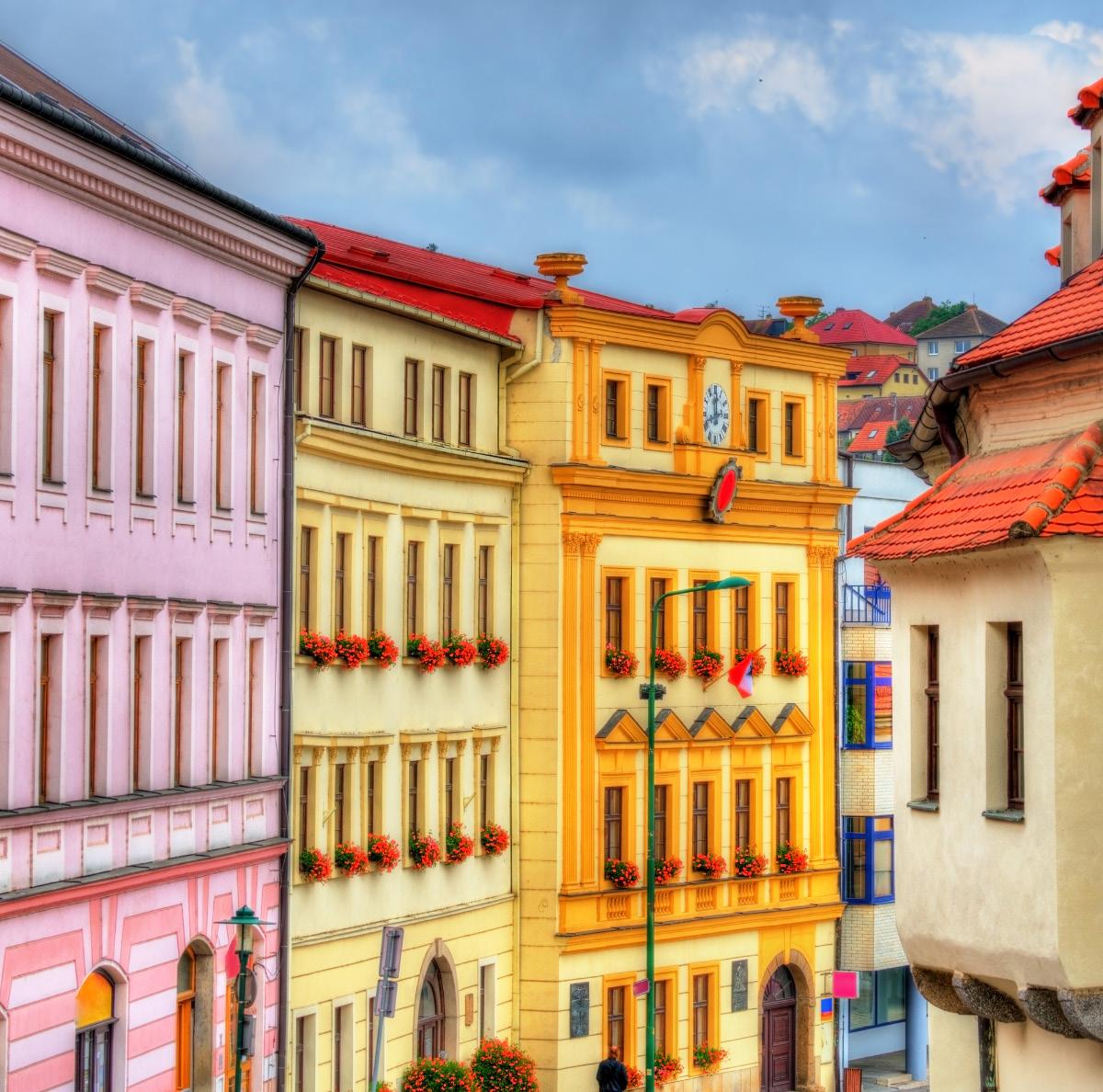
remains largely unchanged, allowing visitors to walk through the narrow streets and experience the atmosphere of this important heritage site. The Basilica of St. Procopius, originally built in the 13th century, is an outstanding example of Romanesque-Gothic architecture. Its architectural grandeur and historical significance reflect the region’s medieval Christian history. The basilica’s detailed frescoes and its blend of stylistic influences from both Western and Byzantine traditions are particularly notable. Třebíč is also known for its beautiful natural surroundings and offers a variety of outdoor activities. As a result, it has become a popular destination for both history enthusiasts and nature lovers alike. The town’s cultural richness and well-preserved historical sites make it an essential stop for those exploring the heritage of the Czech Republic.

Enjoy Your Trip!
Wishing all pilgrims embarking on the Poland and Czech Republic Catholic Pilgrimage a blessed and safe journey. May your travels be filled with peace, joy, and spiritual renewal as you walk in the footsteps of saints, visit sacred shrines, and encounter the rich faith and history of these holy lands. May God guide your steps, protect you along every path, and grant you meaningful moments of prayer, reflection, and connection with Him. Safe travels, and may this pilgrimage deepen your faith and bring abundant blessings to you and all those you hold dear.
Safe travels and enjoy every moment!

